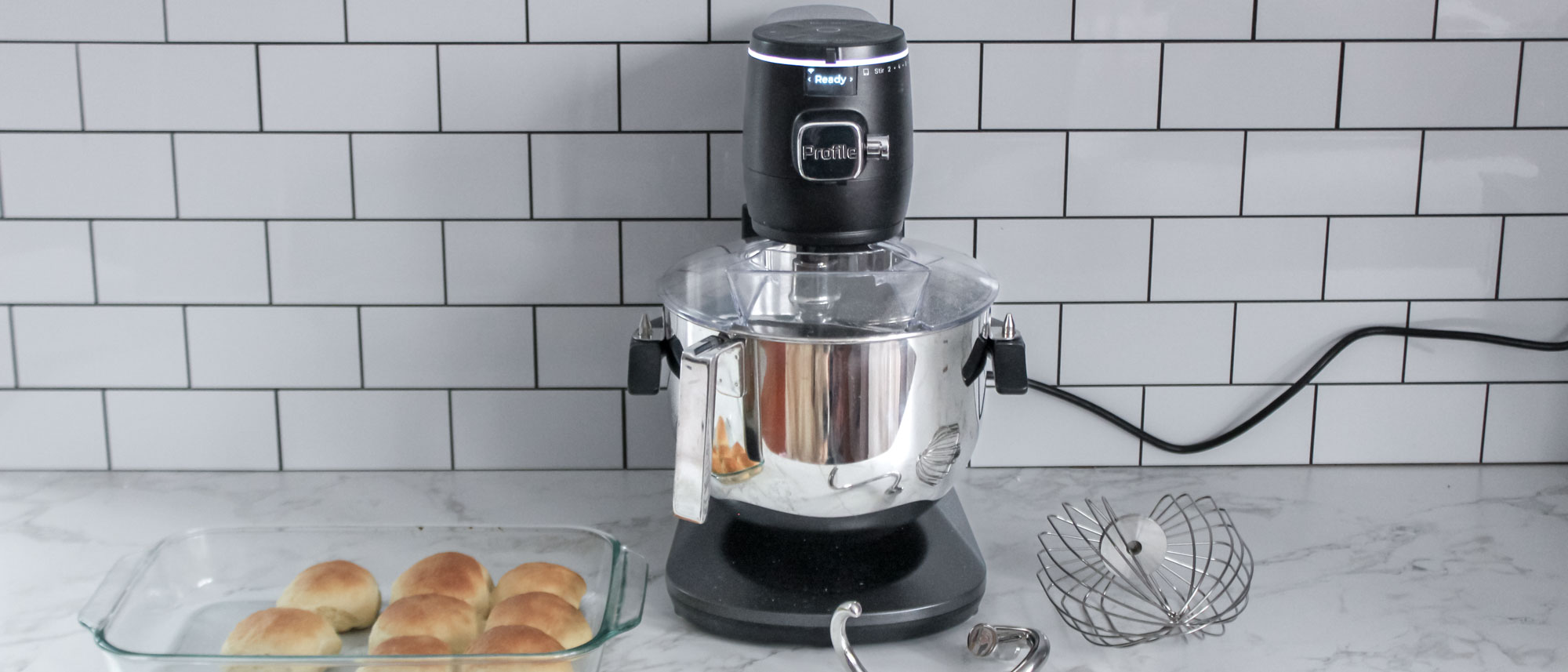Tom's Guide Verdict
The GE Profile Smart Mixer has a high-tech design that syncs up to your smartphone, but as a whole, I wasn't wowed by its performance. It does a good job mixing at high speeds and its built-in timer is undeniably convenient, but we found that its scale isn’t as precise as it should be and the attachments don’t clean the edges of the bowl well. Overall, its performance just doesn’t match its high price tag, especially with so many other great stand mixers out there today.
Pros
- +
Heavy-duty attachments
- +
Stable at high speeds
- +
Convenient built-in timer
- +
Dishwasher-friendly components
Cons
- -
Very expensive
- -
Extremely heavy
- -
Built-in scale isn’t precise
- -
Doesn’t clean the edges of the bowl
Why you can trust Tom's Guide
Model: P8MSASS6TBB
Bowl capacity: 7 quarts
Dimensions: 14 x 11.33 x 17.07 inches
Weight: 44 lbs
Speeds: 11
Material: Stainless steel bowl
If you like baking from scratch, one of the best stand mixers is a must-have addition to your kitchen. A stand mixer lets you quickly mix up batter, knead dough, and whip egg whites, and you don’t have to worry about straining your shoulder the way a hand mixer or whisk would.
Most people instantly think of KitchenAid when they think of stand mixers, but many other brands make these appliances — the latest of which is GE. The brand recently launched its GE Profile Smart Mixer, a high-end and high-tech option for home baking. This heavy-duty machine is equipped with features like a built-in digital scale, reverse mode, and auto sense technology to prevent overmixing, making it one of the most advanced stand mixers out there.
We wanted to see if the GE Profile Smart Mixer is worth its high price — and whether it can compete with our trusty KitchenAid mixers, such as the KitchenAid Artisan — so I put this gadget to the test in my kitchen. After a few weeks of use, there are a few things I really like about this stand mixer, but it also has some noteworthy pitfalls you should know about before you buy.
GE Profile Smart Mixer: Price and Availability
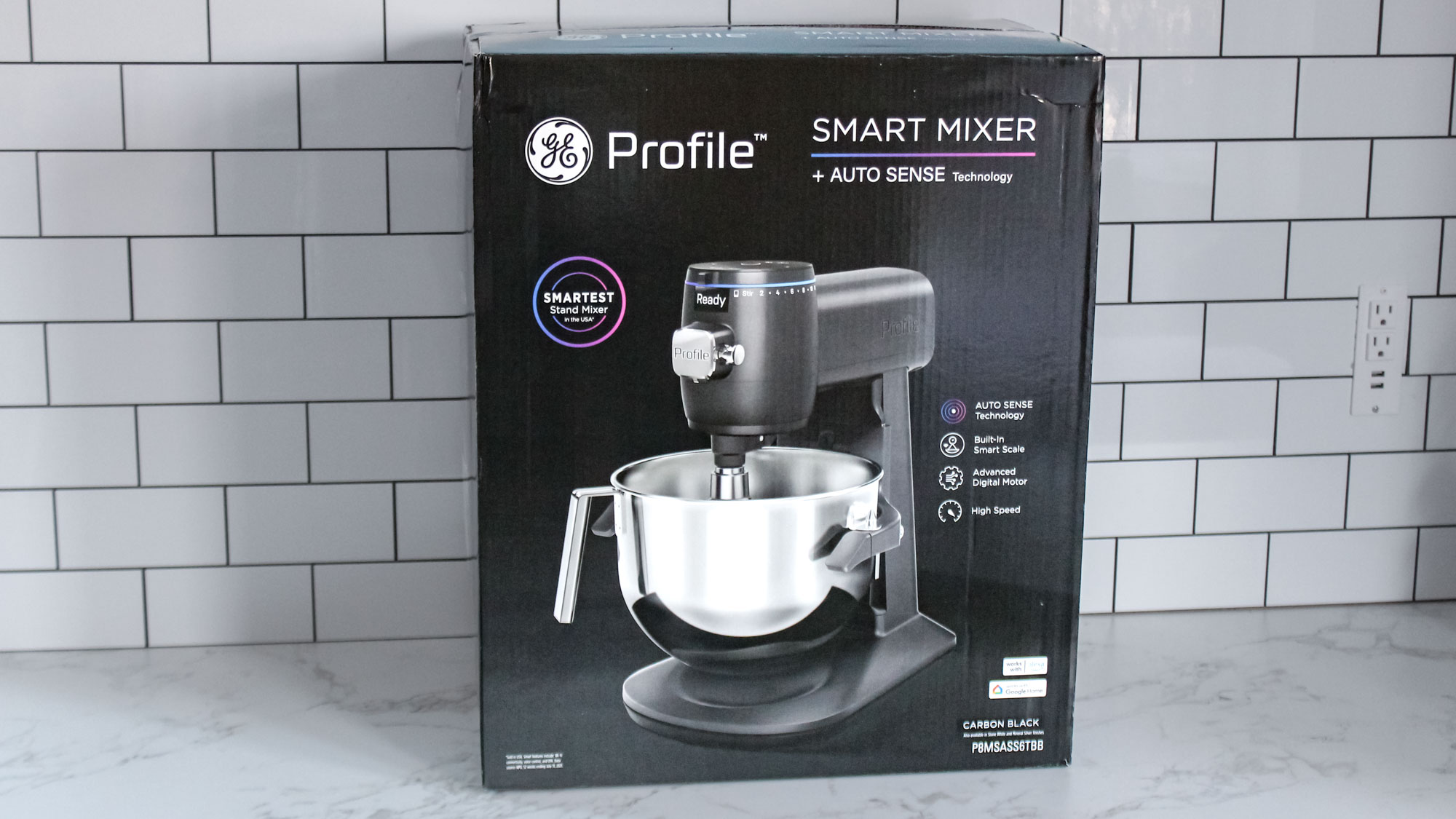
The GE Profile Smart Mixer has an MSRP of $799. While this is undeniably pricey, it’s comparable to other high-end stand mixers from brands like Wolf Gourmet and Ankarsrum.
Additionally, you can frequently find the GE Profile mixer available on sale — it’s currently marked down to $599 on GE Appliance's website, as well as through Amazon and Williams Sonoma.
GE Profile Smart Mixer: Design
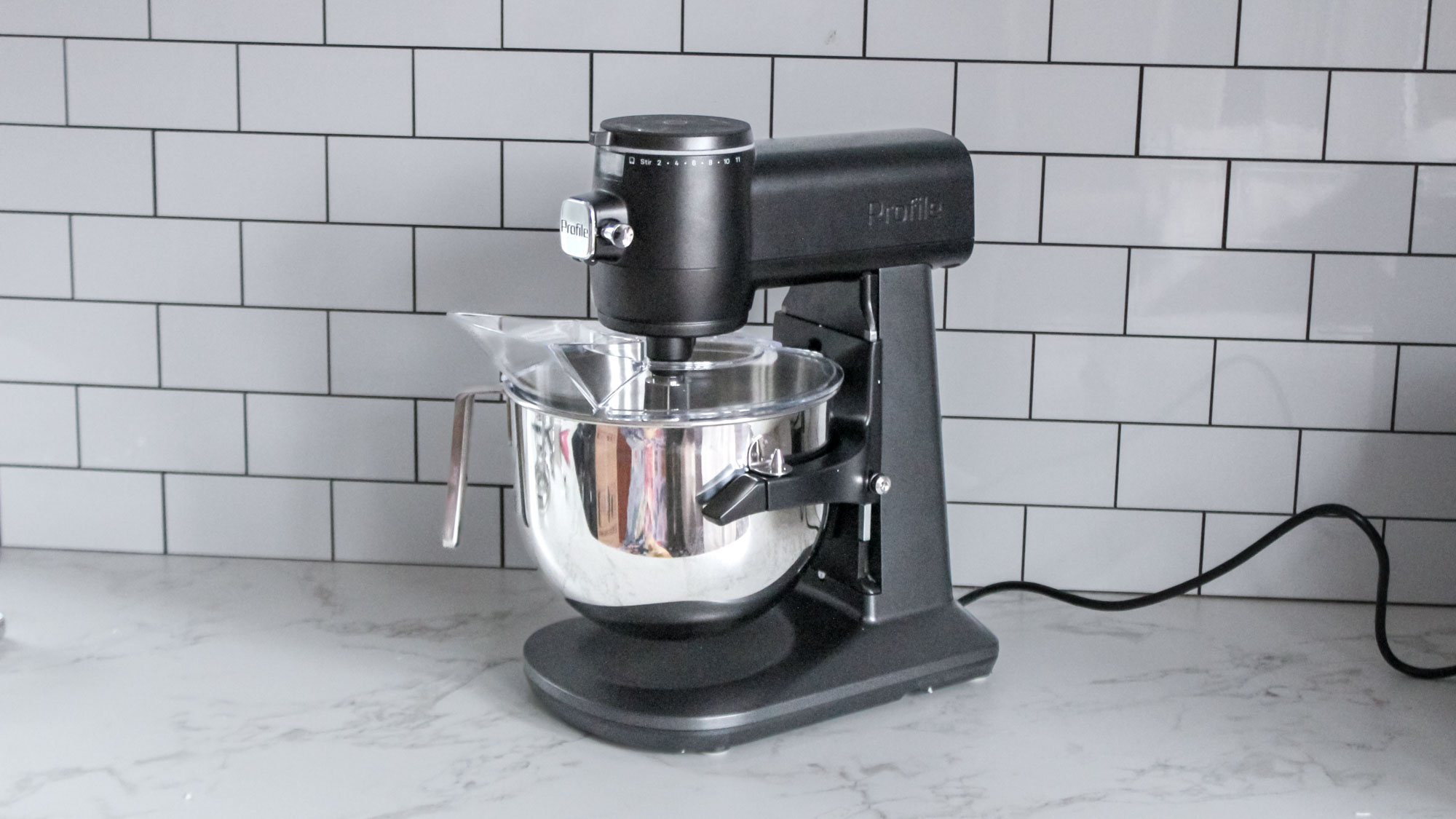
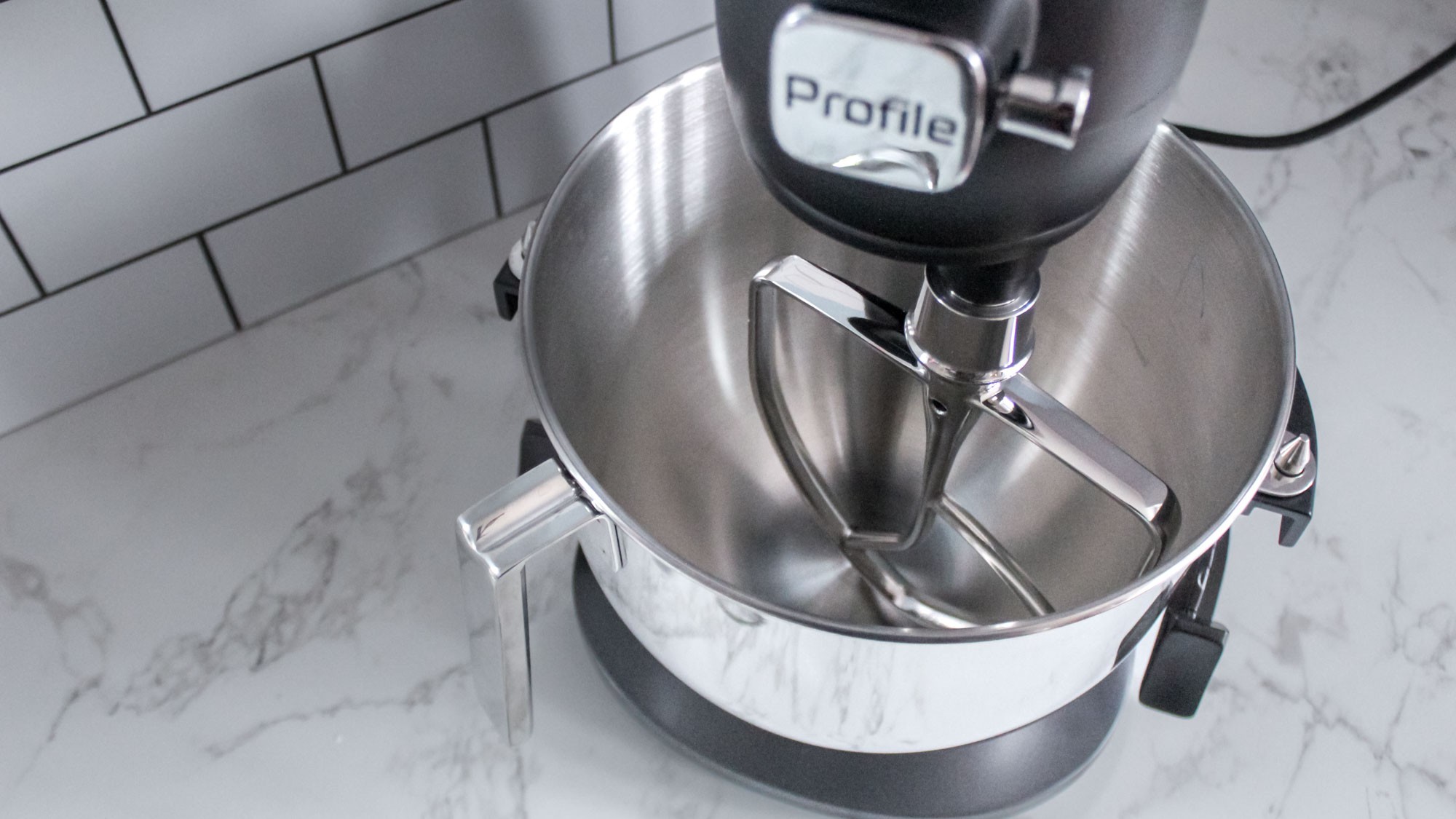
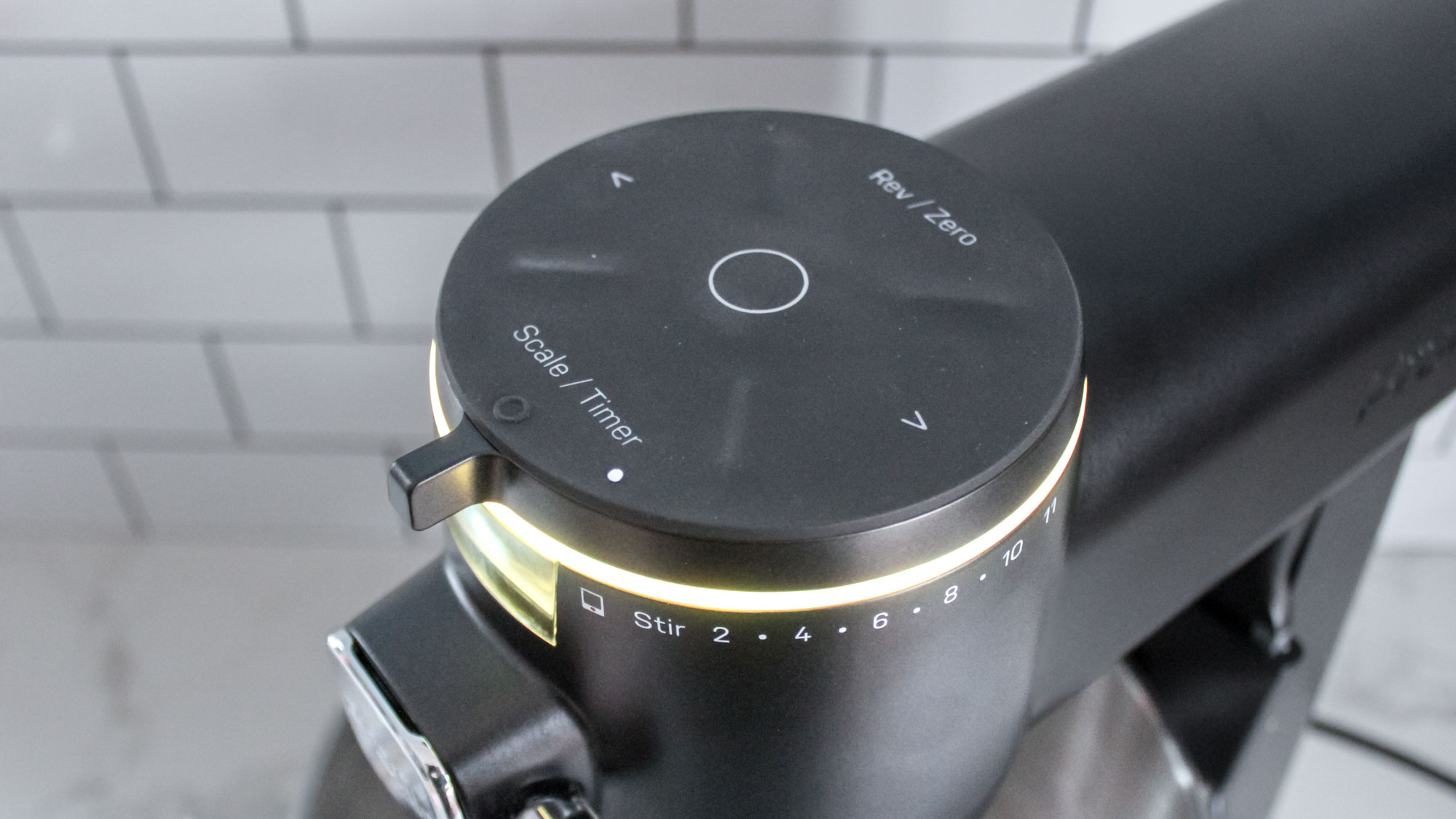
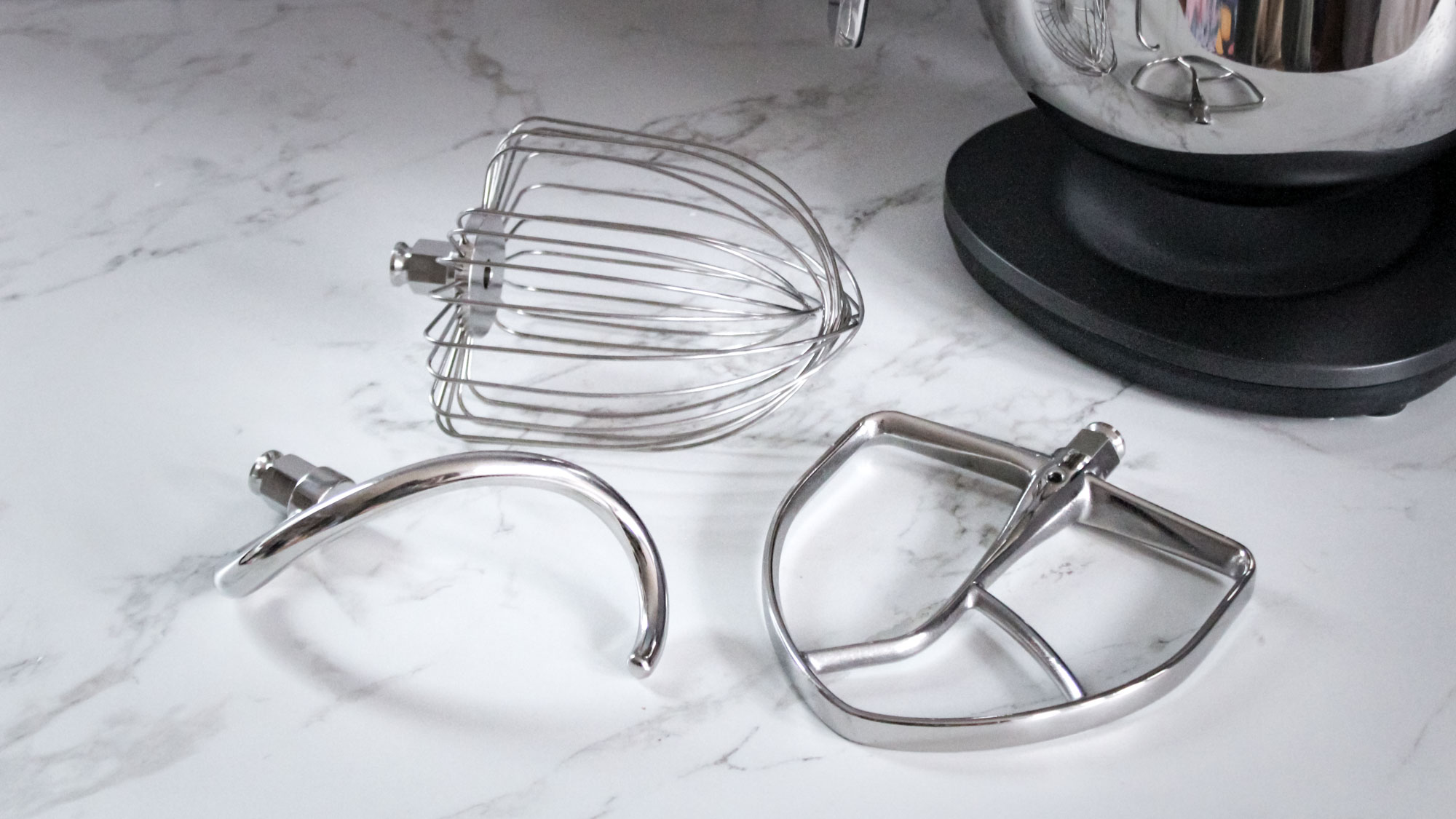
The first thing I noticed about the GE Profile Smart Mixer is that it is heavy, weighing in at a whopping 44 pounds — that’s almost twice as much as my KitchenAid stand mixer, which is heavy in its own right at 26 pounds. Given that it weighs so much, the GE Profile Smart Mixer was challenging to unbox and set up on my counter. I even found it difficult to pull the mixer across the counter when I wanted to use it. This appliance will need to have a designated home on your countertop, as I doubt you’ll want to move it in and out of storage.
While many stand mixers have a tilt-head design, the GE Profile has a drop bowl instead. There are two tabs on the “arms” that stick out from the base, and when you press them, you can lower the bowl several inches. The stainless steel bowl is held in place by two tabs on the arms, and it has a large handle that makes it easy to lift. It takes a little trial and error to get used to putting the bowl into place, but it became second nature by the time I finished testing the mixer.
This mixer’s control dial is on the top of the head — there’s a tab that you can rotate to the right to turn up the speed from 1 (called “stir”) up to 11. There’s also a setting with a little phone icon that allows you to control the mixer from your smartphone (more on that later). There are also buttons on top of the machine that allow you to switch into timer or scale mode, reverse the mixer, zero the scale, and more.
Like most stand mixers, the GE Profile comes with three attachments: a mixing paddle, whisk, and dough hook. All three are made from heavy-duty stainless steel and feel very substantial. You just push them up into the shaft and they click into place. To remove them, you need to pull down on the shaft’s collar, and they drop out. The mixer also has an accessory port on the front of its head, similar to a KitchenAid, but it doesn’t seem like the brand offers any attachments at this time.
GE Profile Smart Mixer: Smart Features
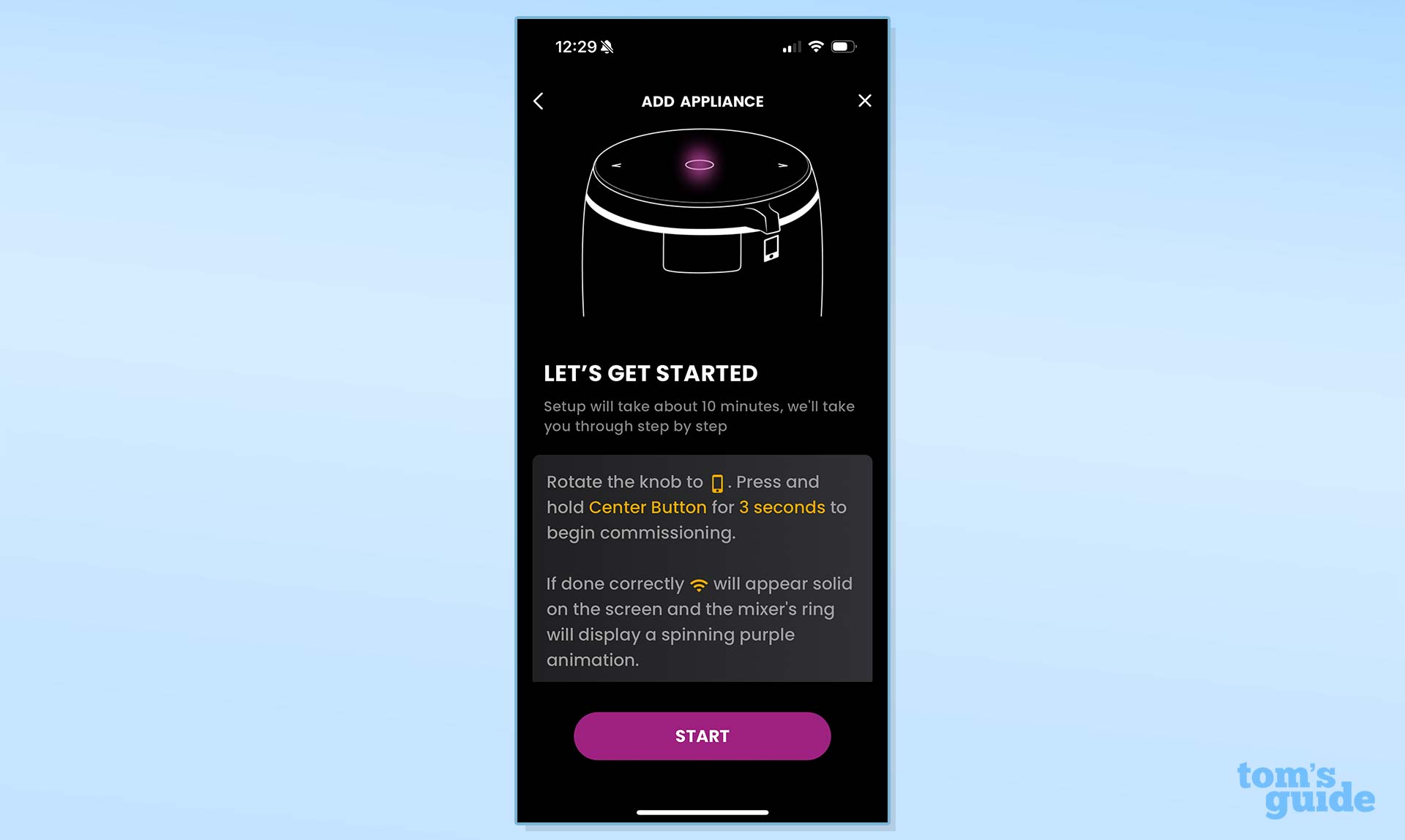
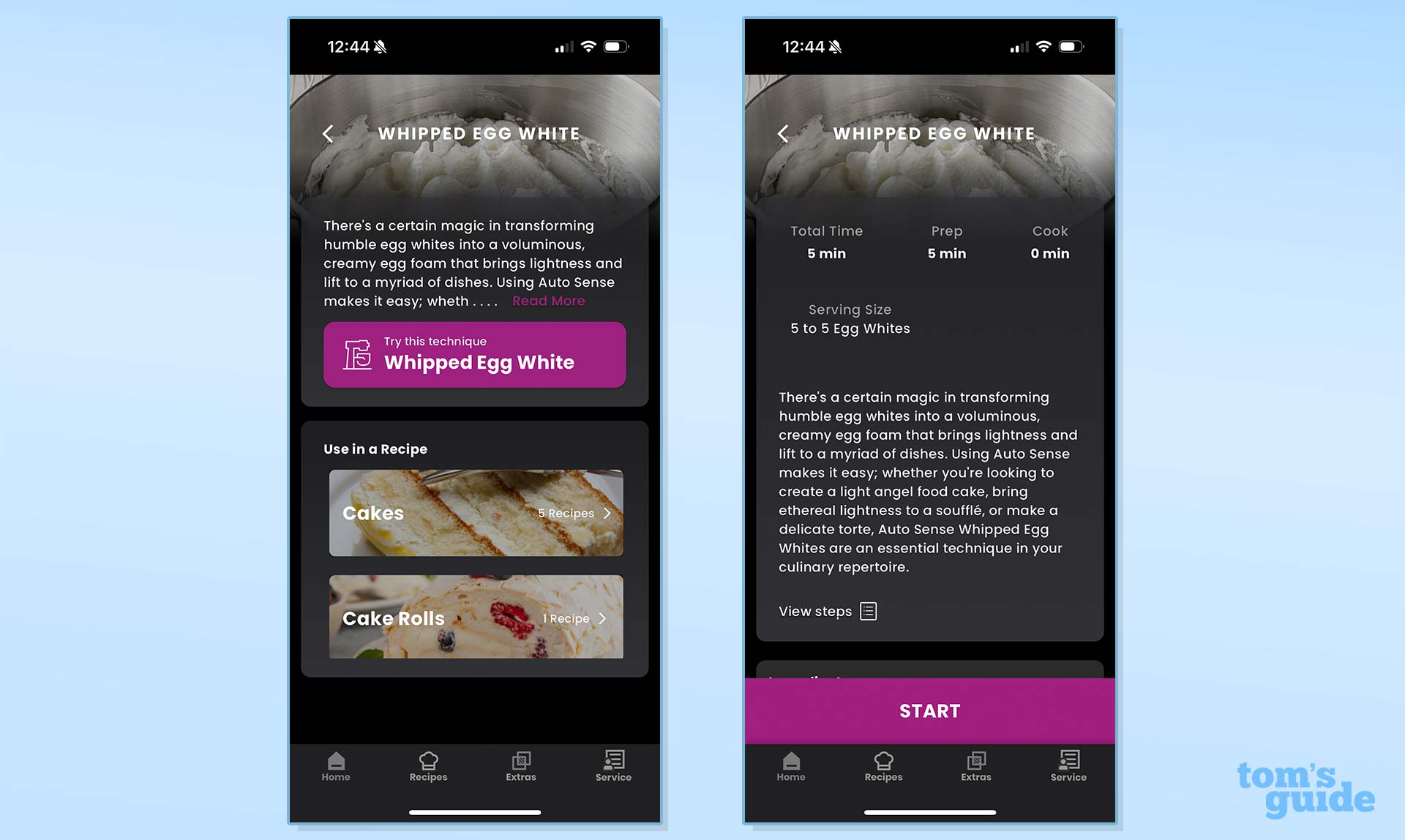
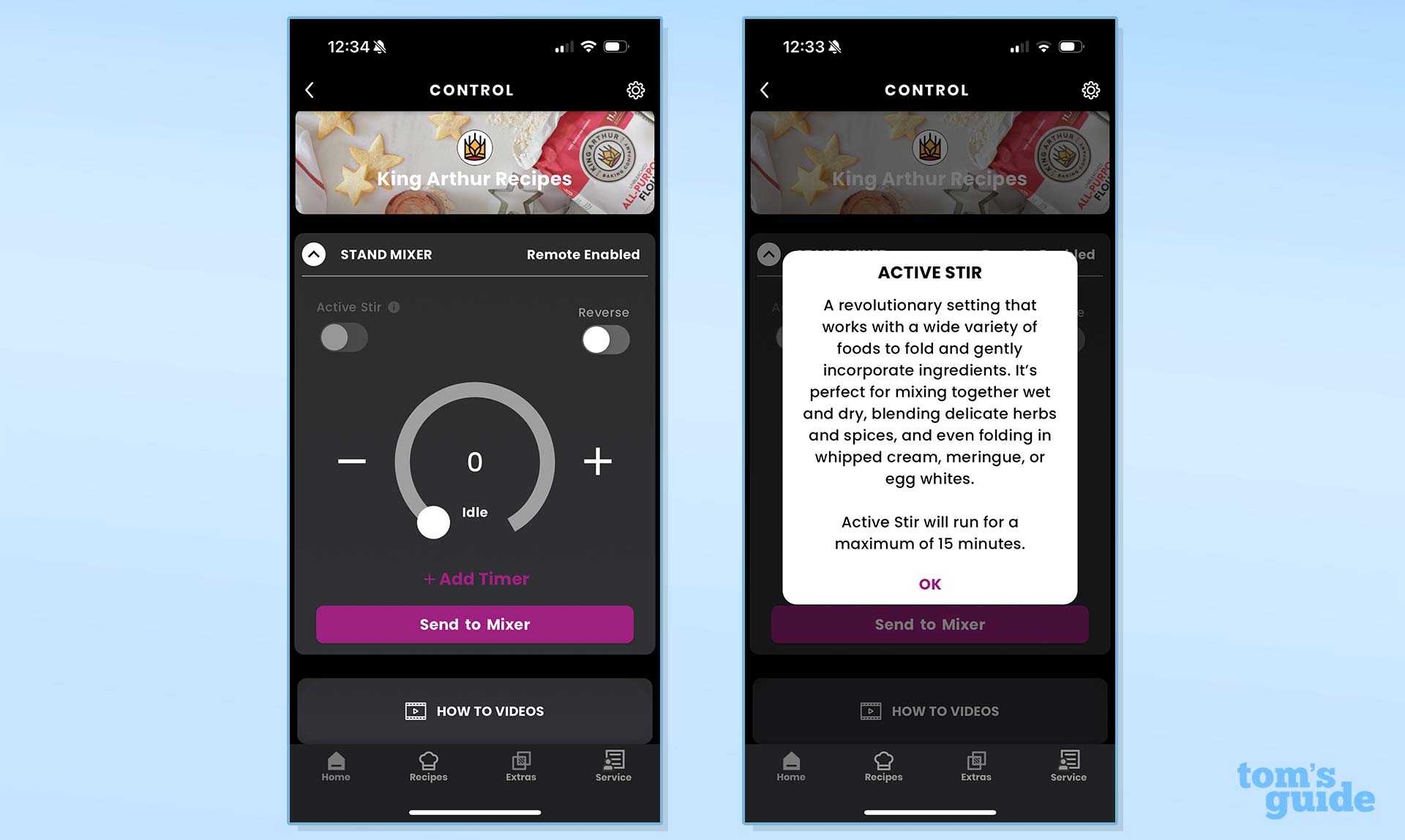
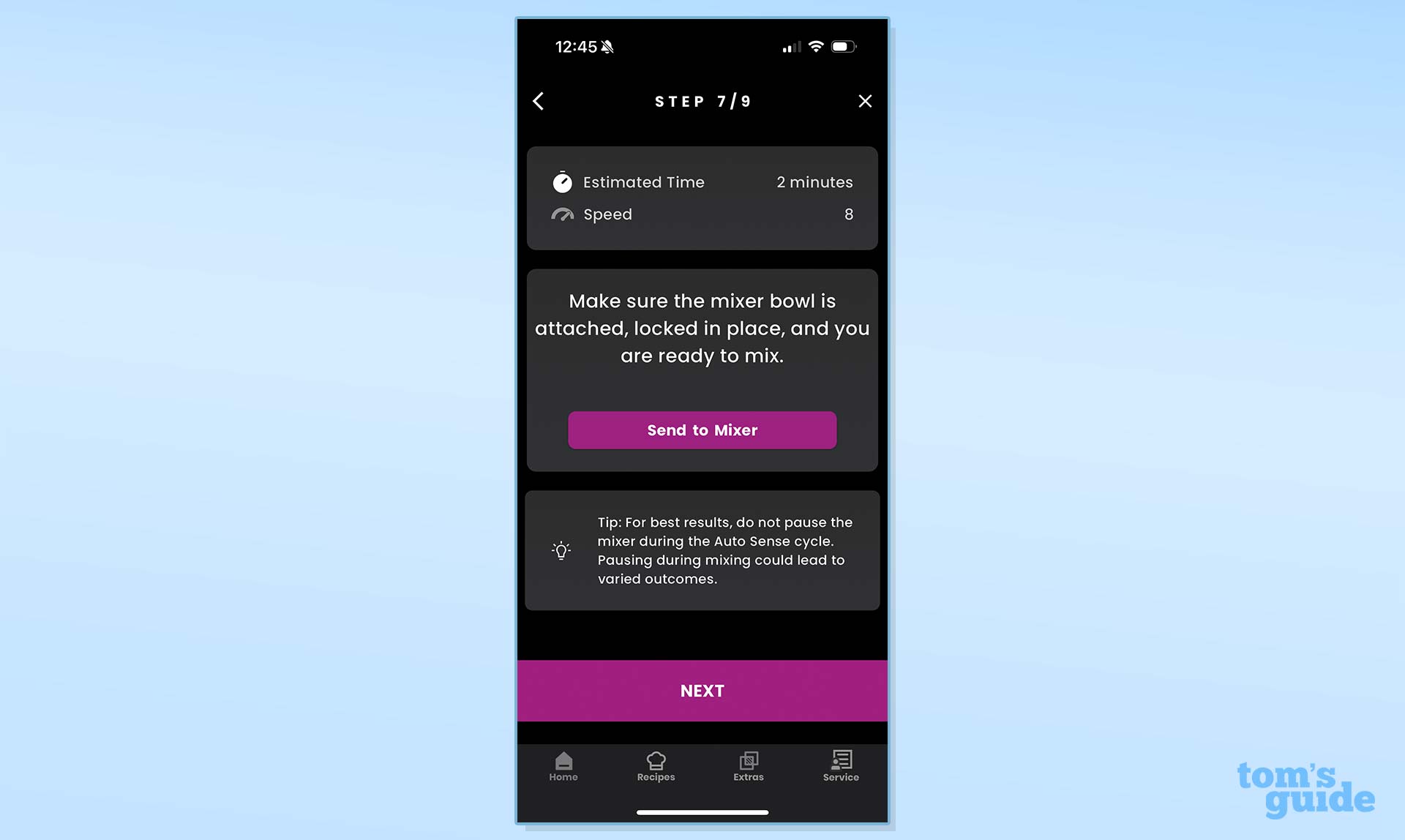
There are a few ways to use the SmartHQ app with the stand mixer. If you turn the mixer’s control dial to the remote setting, you can turn the mixer on and off right from your smartphone. You can also connect the device to Amazon, Alexa, and Google Home and control the mixer via voice commands. The app also includes a library of recipes and can walk you through the baking process step-by-step.
Additionally, there are a few special settings that can only be accessed through the app, such as the “Active Stir” and “Auto Sensing” features. Active stir is a more gentle setting that folds and incorporates ingredients in a similar technique to hand-stirring, while the auto-sense option actively monitors changes in texture and viscosity to help prevent over- or undermixing.
While I tried out all of the settings and have detailed my experience with the auto-sensing feature below; I doubt that the smart features will be particularly useful to most users. It’s much easier to control the mixer manually than to pull out your phone. However, the guided recipes might be helpful for beginners, but I can’t imagine many novice bakers starting out their culinary journey with a $600 stand mixer.
GE Profile Smart Mixer: Performance
I tested the GE Profile Smart Mixer in my kitchen for around a month, assessing how it performed on a variety of baking and cooking tasks. Here’s how it did while making bread dough, cake batter, meringue, and homemade butter.
Making bread
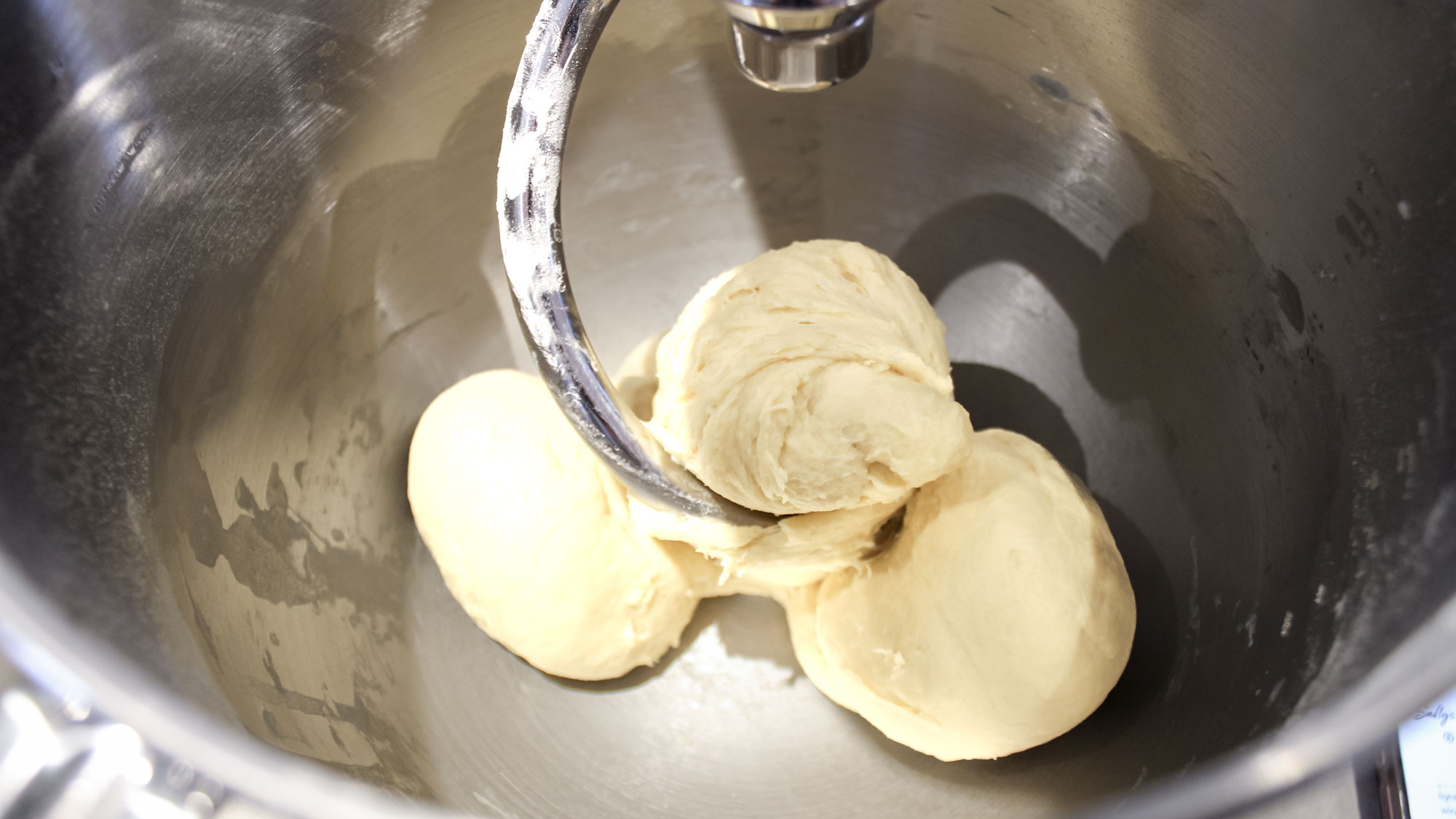
I love making homemade bread but can’t be bothered with hand-kneading, so I always pawn the task on my stand mixer. For my first test with the GE Profile Smart Mixer, I made a batch of easy dinner rolls made from enriched dough. The recipe involved mixing together yeast, milk, sugar, egg, and butter, which I usually do with the bread hook. It worked OK to incorporate the ingredients, but I ended up scraping down the sides of the bowl with a silicone spatula to ensure everything was evenly combined.

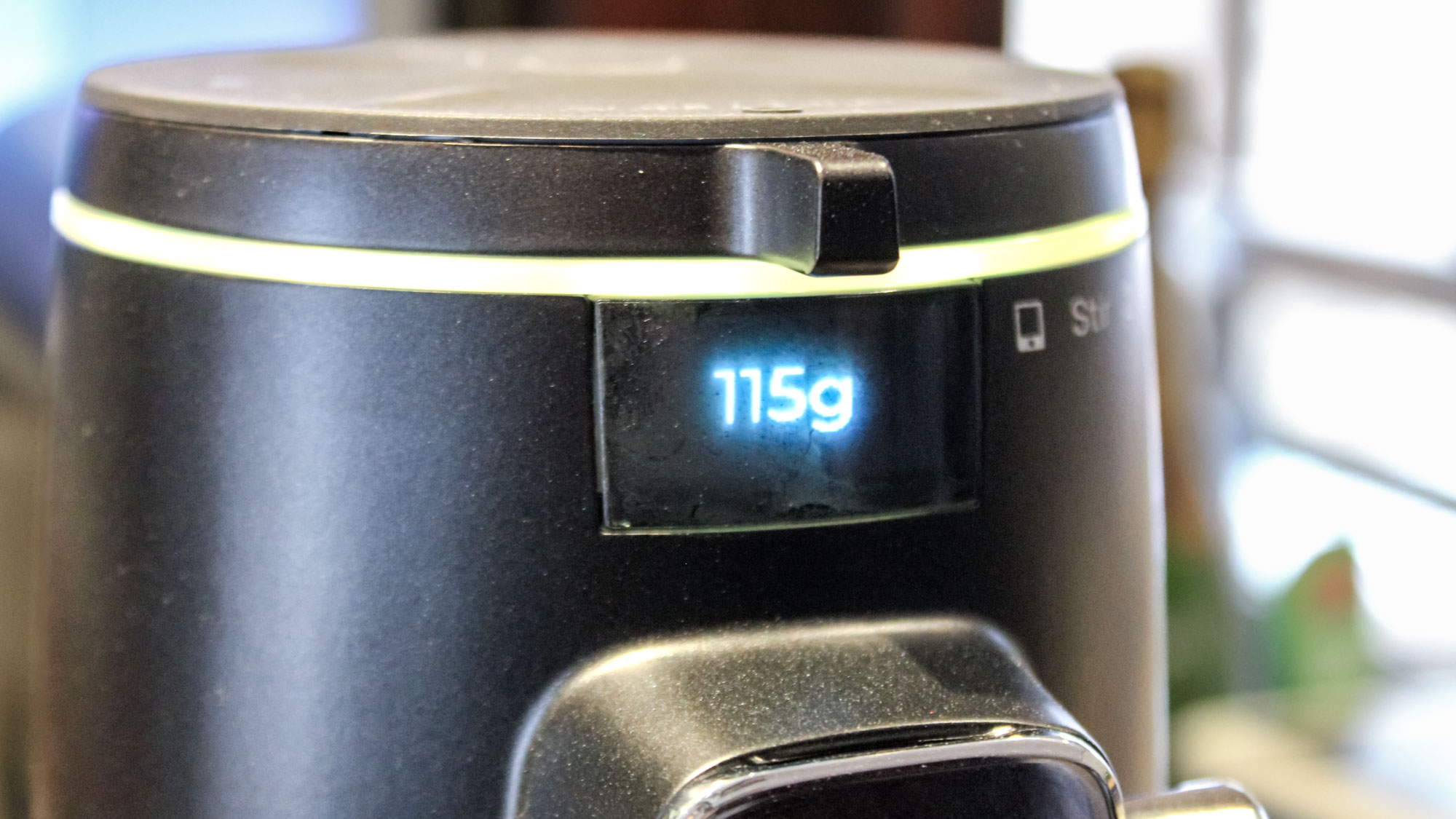
One of the features I was most excited about was the mixer’s built-in digital scale, which I used while measuring flour. The user manual says to put the bowl on the base of the mixer, but I also found that the scale works when the bowl is hooked into place on the machine. There’s a button on top of the head that lets you switch over to the scale setting and a button that zeros out the measurement.
Unfortunately, the scale didn’t impress me. It’s slow to react to ingredients being poured into the bowl, and much to my surprise, it only measures in increments of 5 grams. This makes it much less precise than most kitchen scales, and in baking, precision is key! I was really disappointed with this feature, especially considering the machine’s high price point.
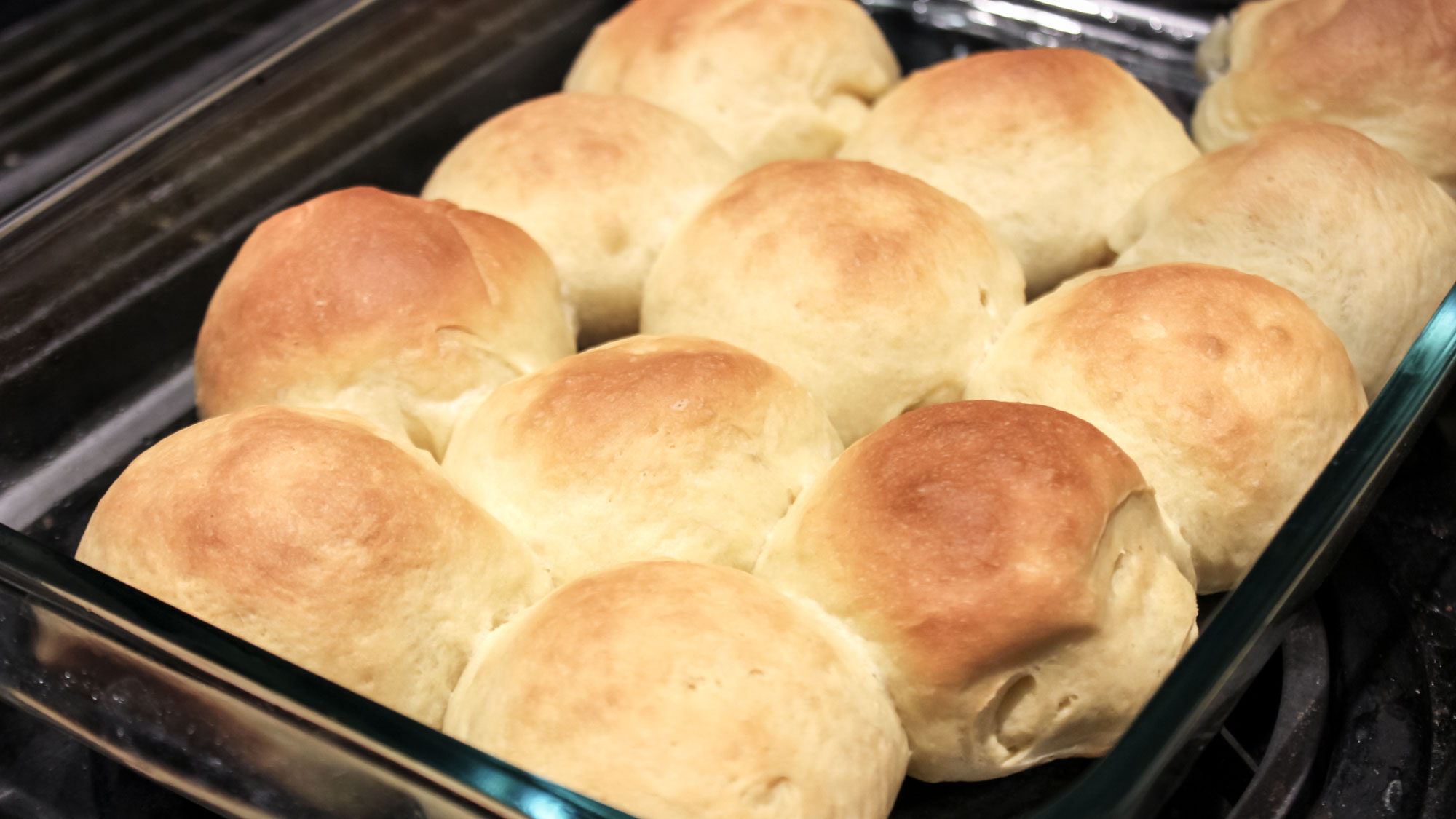
After the flour was mixed in, I turned the mixer on to knead for five minutes. This is one of the few times when the machine’s heavyweight design came in handy. Some lightweight stand mixers wobble precariously when kneading thick dough, but this one barely moves, and that's thanks to its sturdy build. It also has a non-slip bottom, so you don’t have to worry about it shifting around during use, and I even felt comfortable enough to leave the room while it finished kneading my dough.
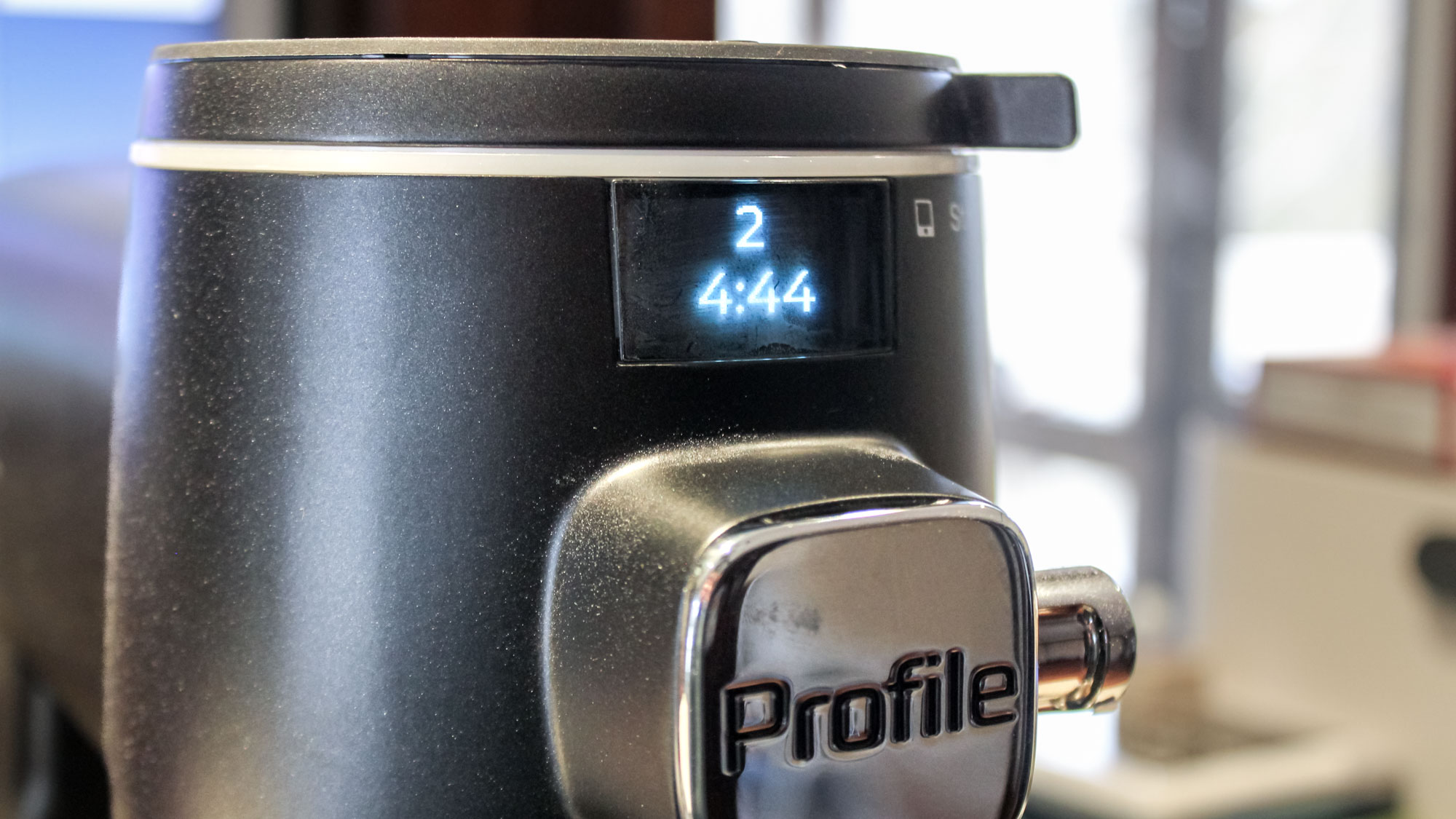
I also liked that the mixer has a built-in timer. I programmed it to five minutes, and when the timer ran out, it automatically stopped mixing. This is particularly useful if, like me, you multi-task while working in the kitchen. The dough came out nicely kneaded and yielded a delicious pan of dinner rolls that my family ate throughout the week.
Homemade butter
While baking my bread, I decided to whip up some homemade butter using heavy cream I had left in the fridge. I attached the mixer’s whisk and put the plastic splatter shield in place on top of the bowl — in anticipation of a mess.
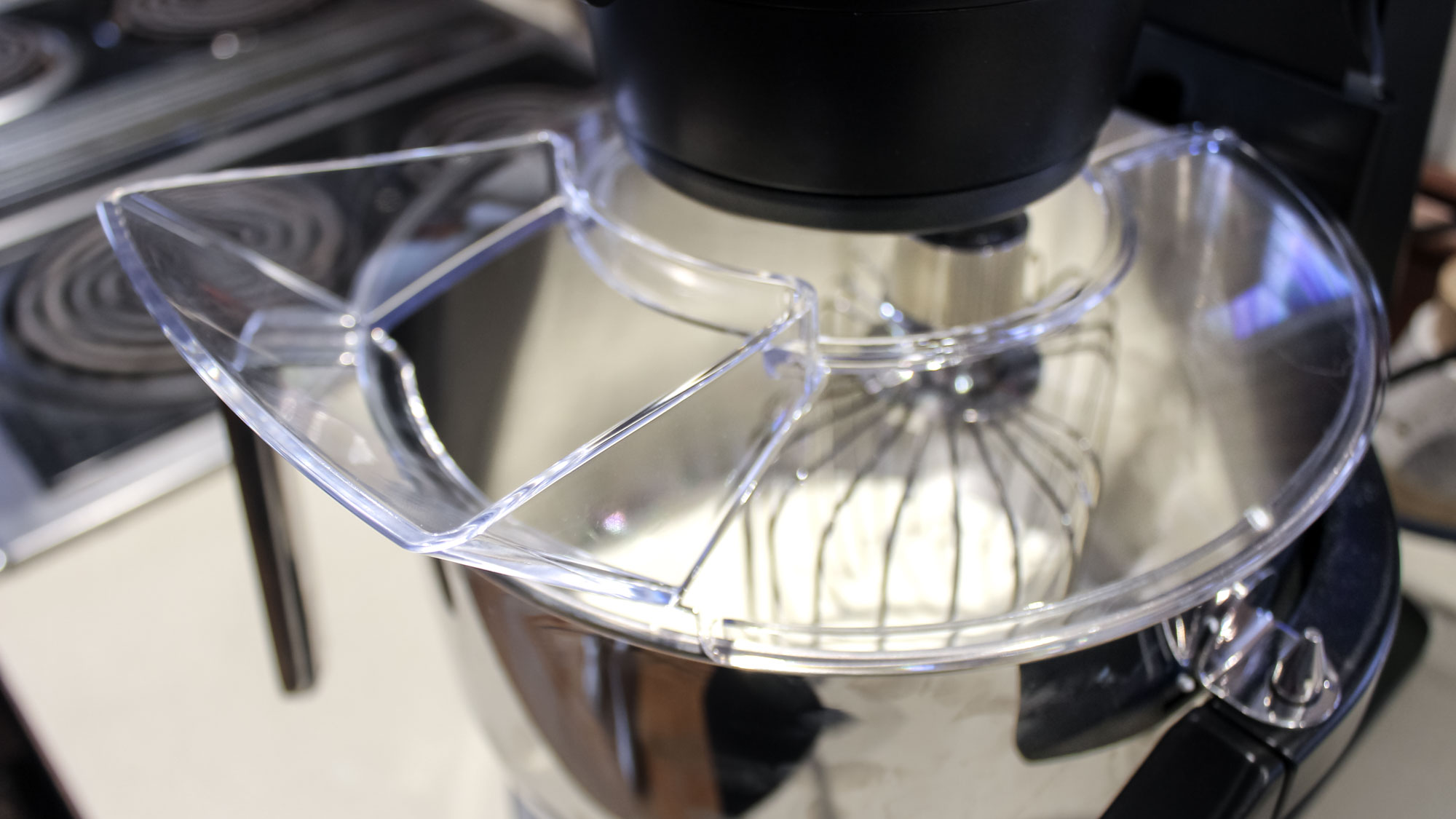
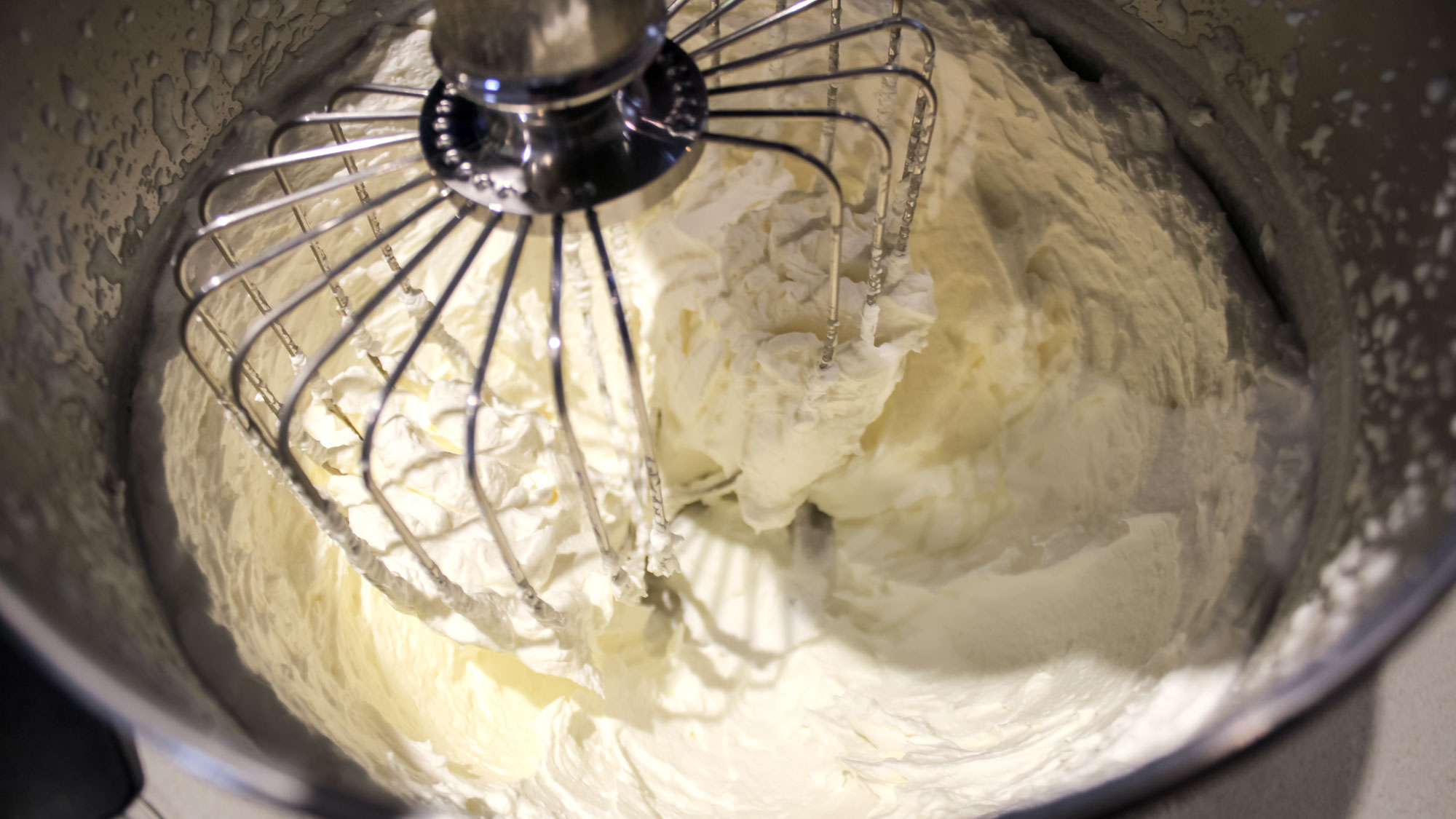
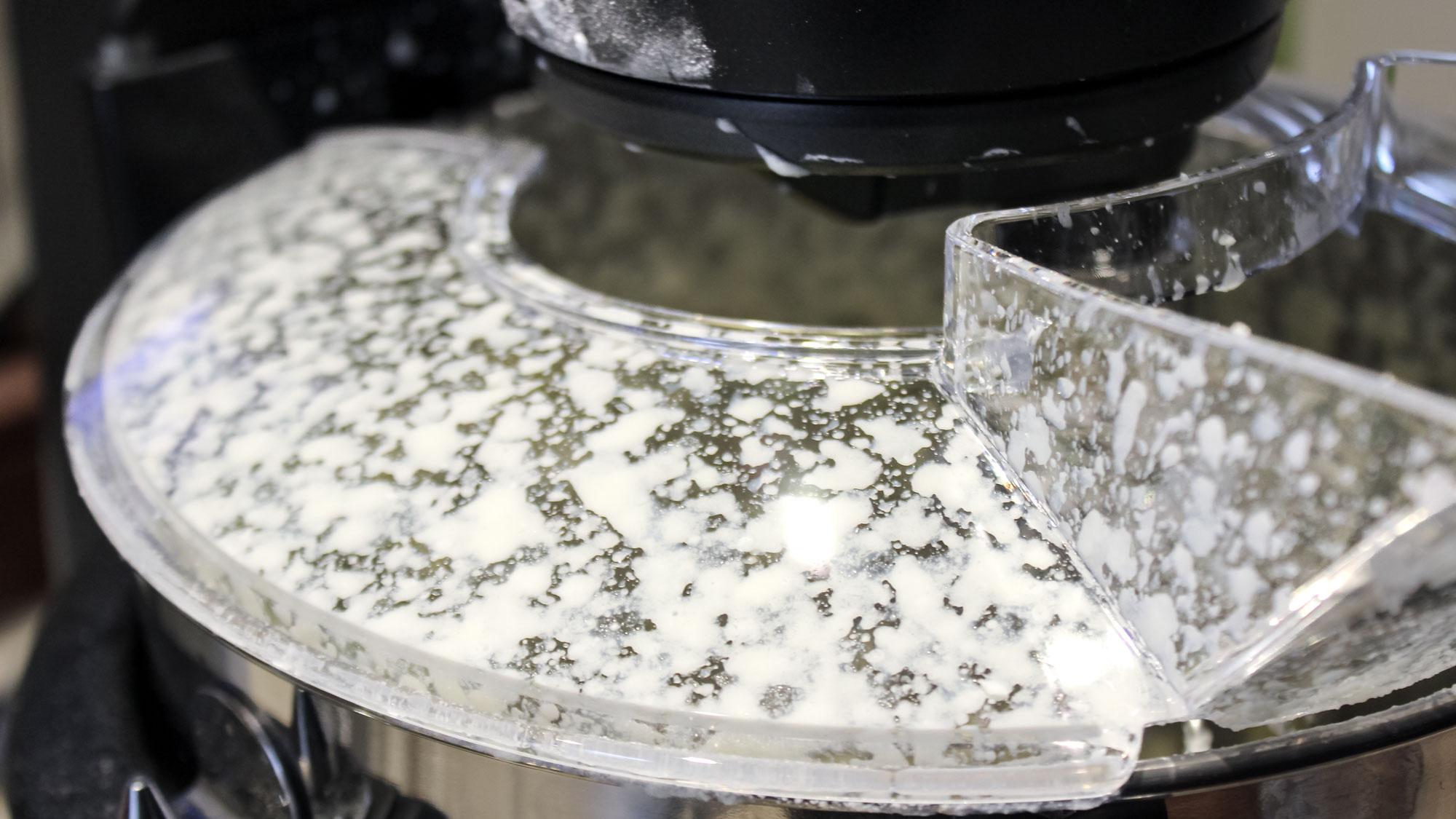
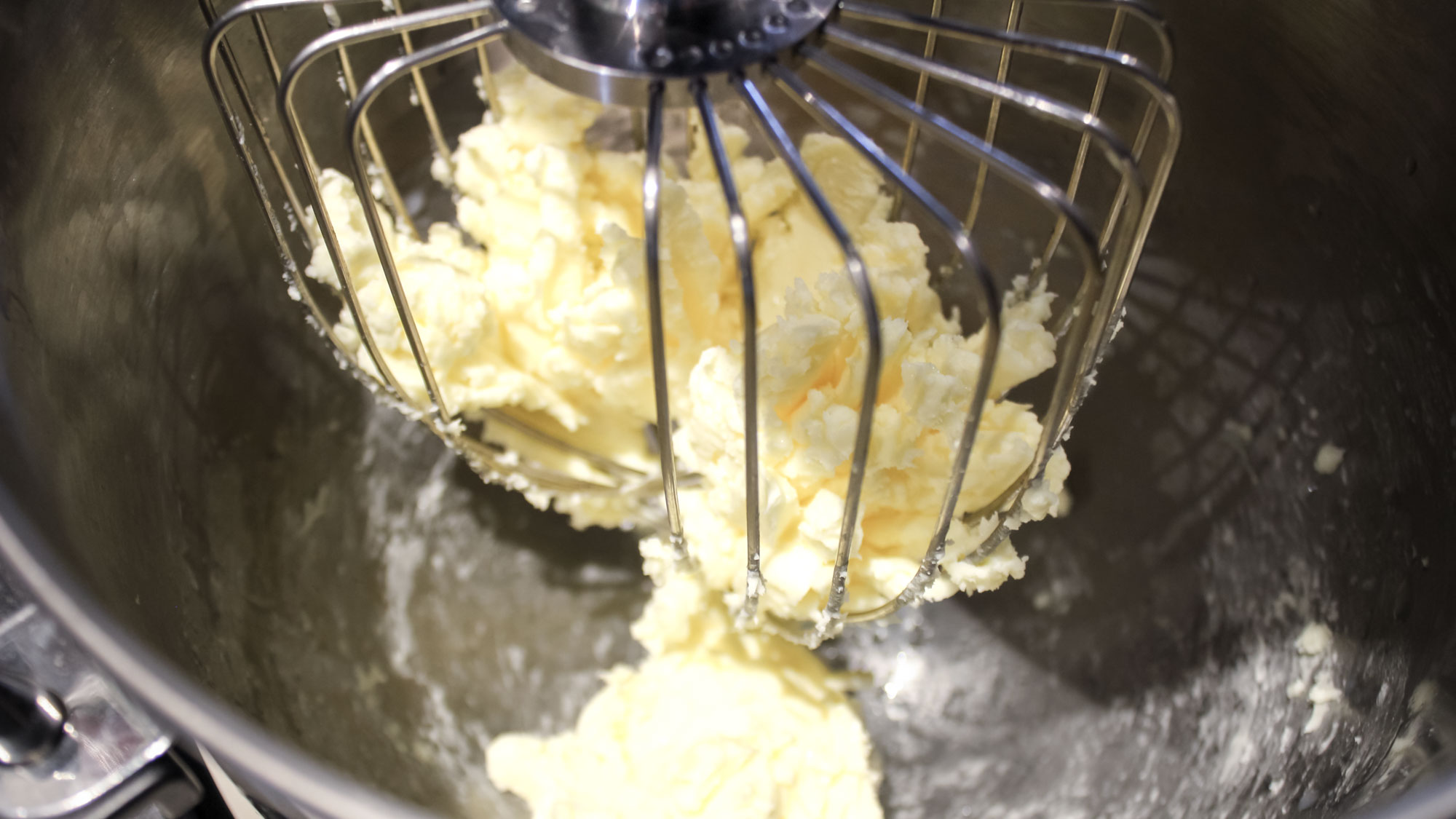
To make butter, you whisk heavy cream at high speed until the buttermilk separates from the solids. It takes around 20 to 30 minutes, and I cranked up the GE mixer to its highest speed to expedite the process. I was glad it had a splatter guard over the bowl, preventing flecks of cream from splattering over my counters. However, I did have to thoroughly wipe down the underside of the mixer when I finished.
As the mixer did its thing, I noticed that after the cream was whipped into stiff peaks, it was getting stuck on the sides of the bowl where the whisk couldn’t reach. This meant that some of the cream was being missed, and I had to stop and scrape down the sides of the bowl several times to ensure it was all included in the butter mix. Ultimately, the butter separated out as expected after around 20 minutes, and it made a delicious topping for my homemade bread.
Making coffee cake
I also wanted to try out the stand mixer’s paddle attachment, which is crafted from heavy-duty stainless steel. I decided to make a coffee cake, which involves creaming together room-temperature butter and sugar before mixing in the other ingredients.
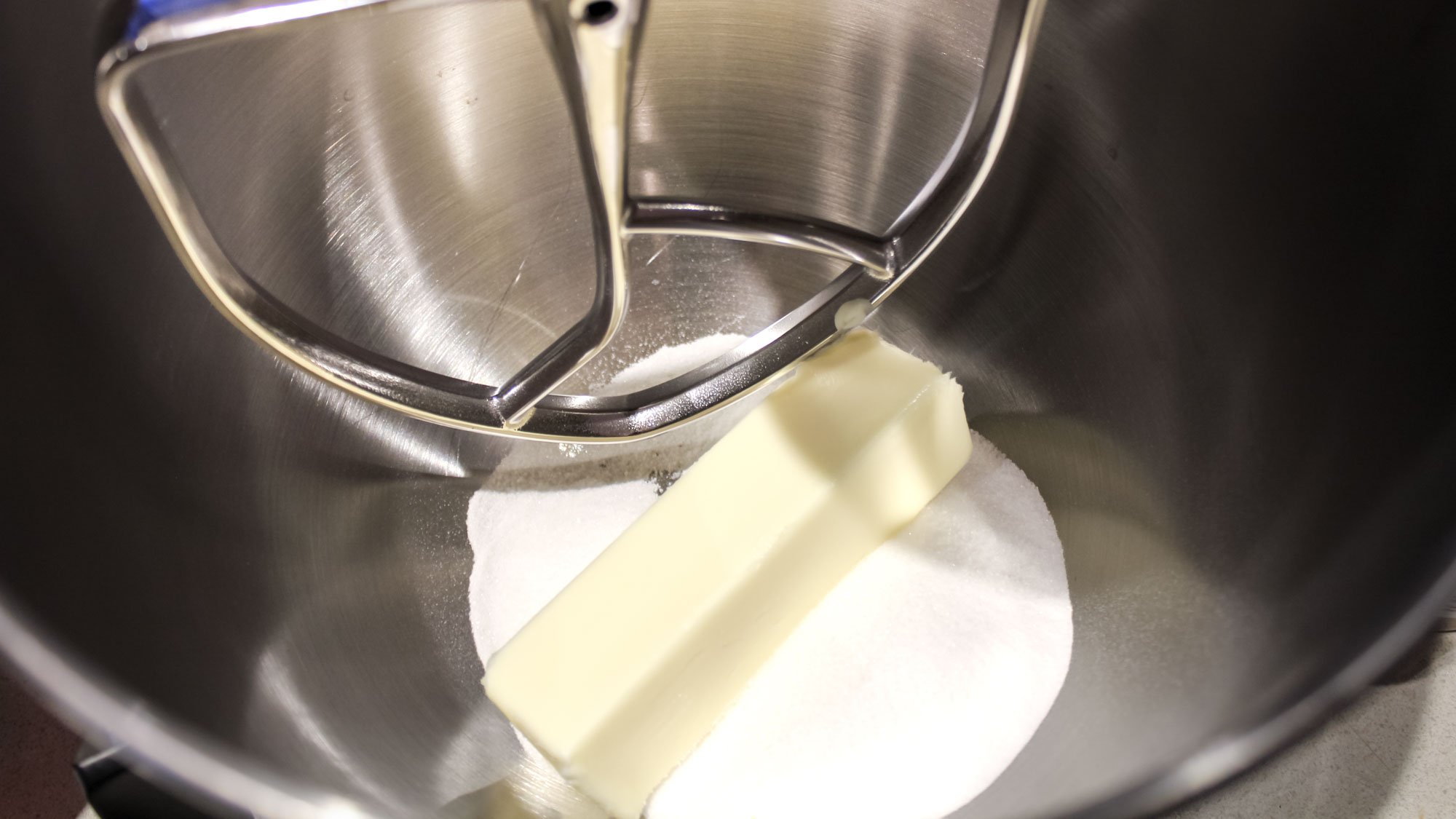
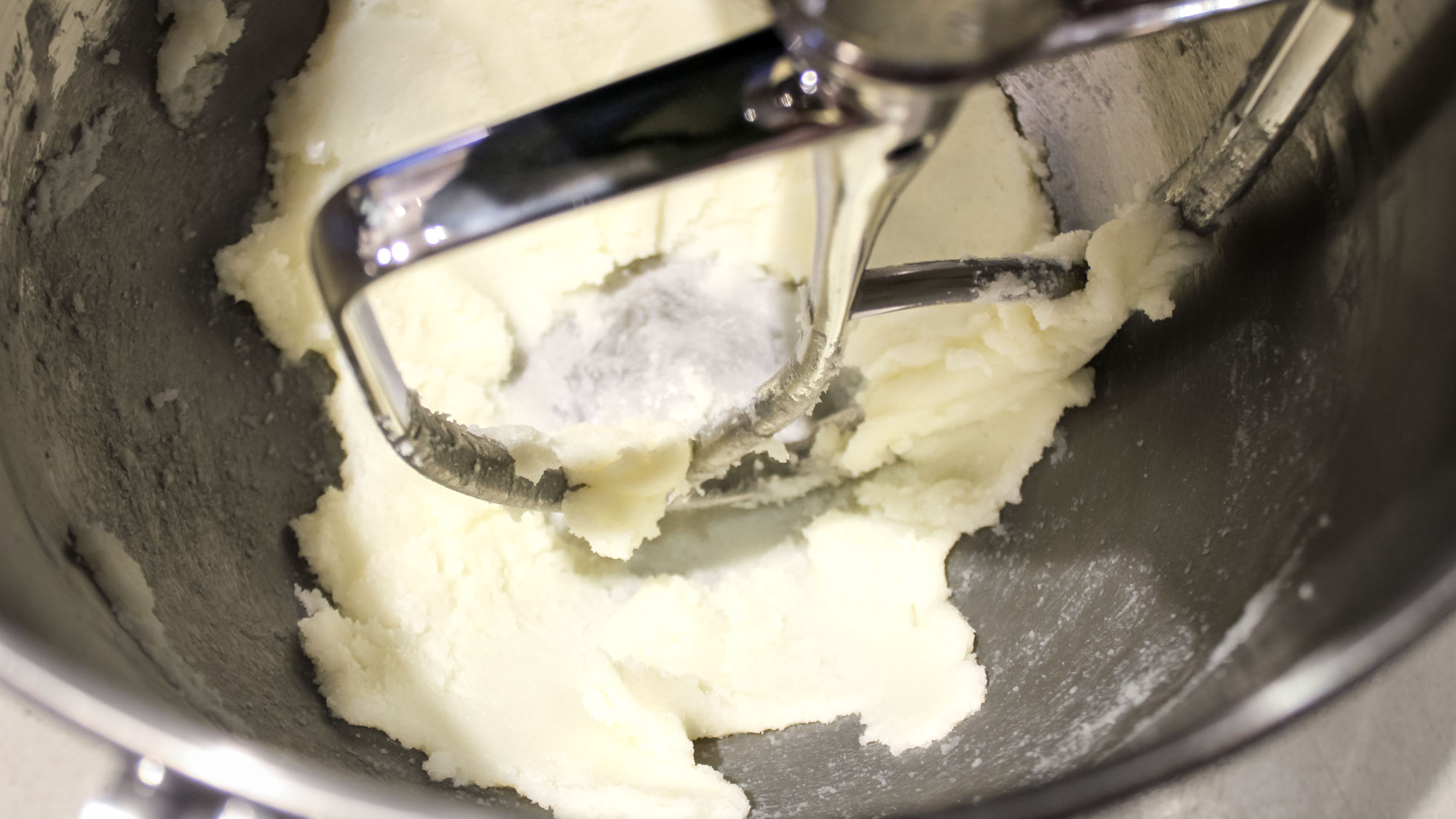
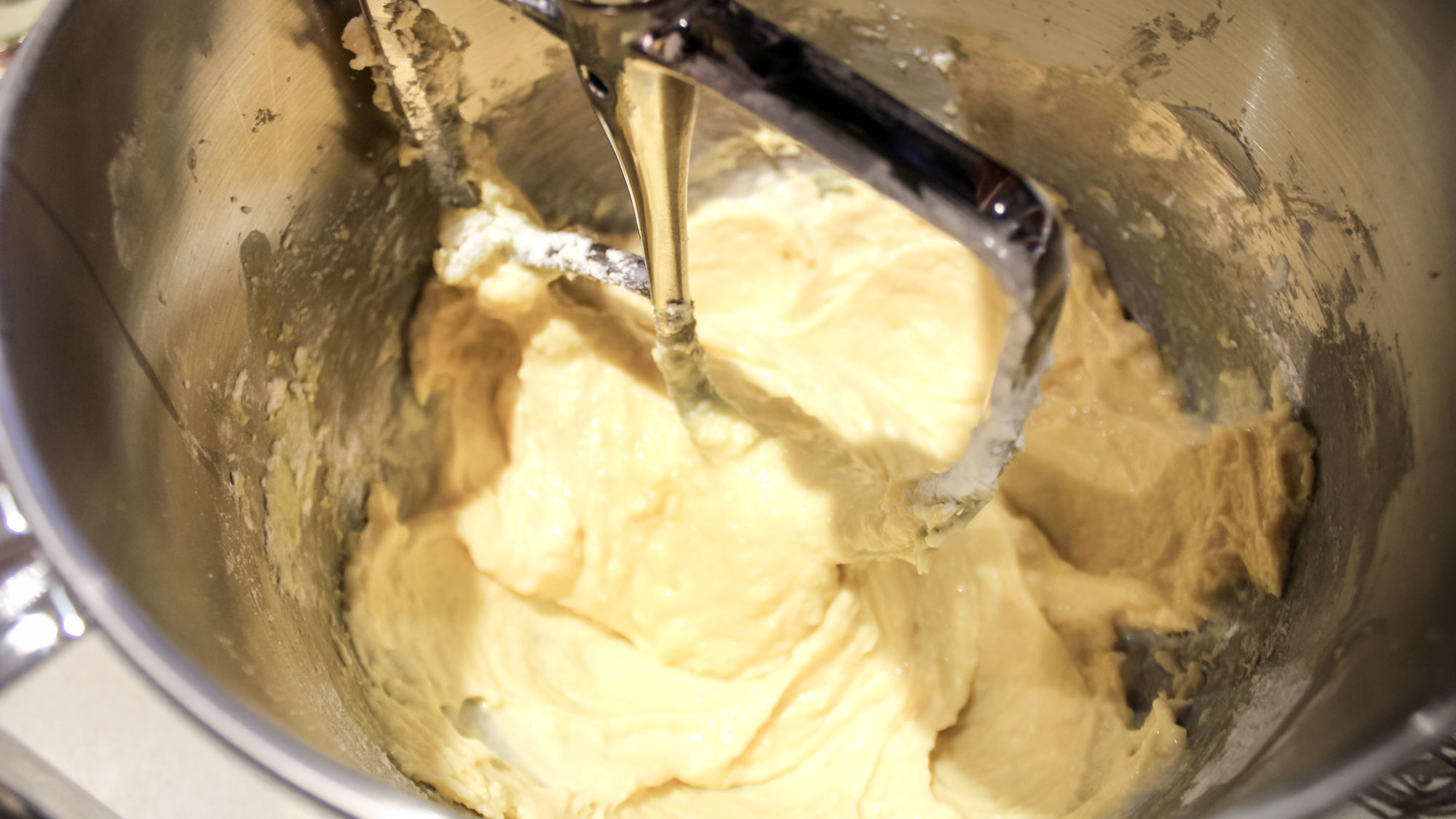
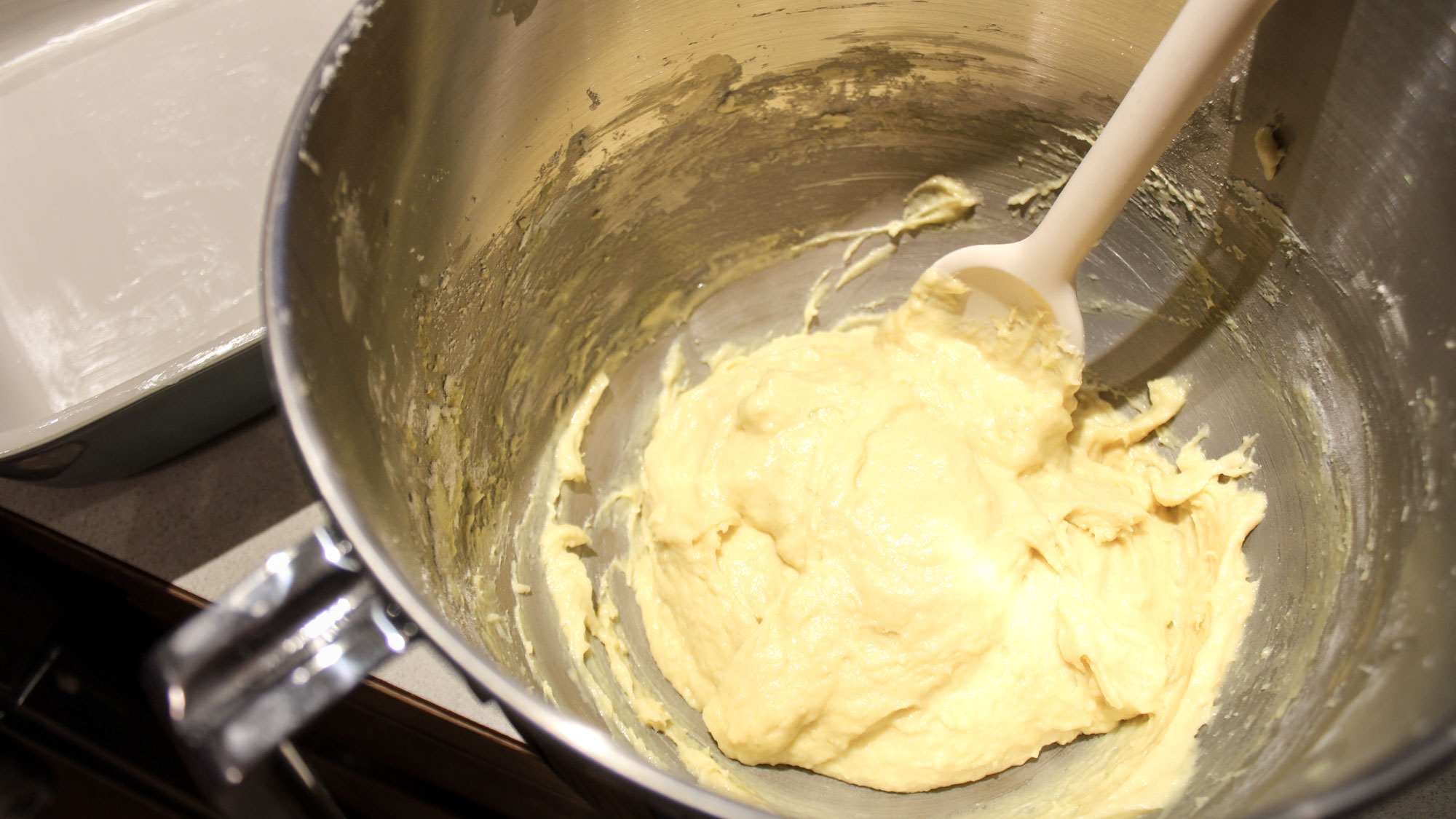
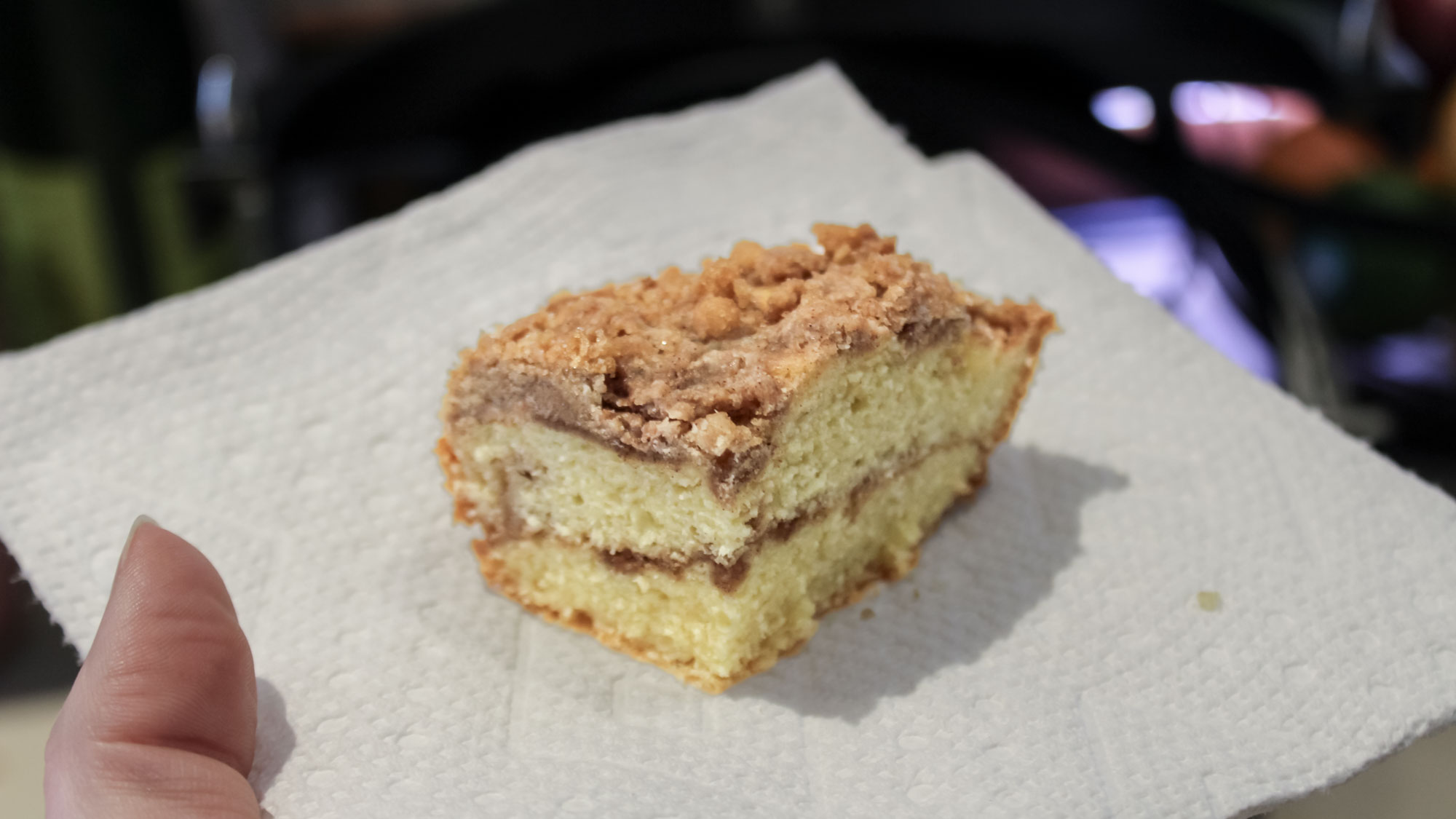
This process was a bit frustrating, as the paddle smushed the mixer onto the sides of the bowl where it could no longer reach. This left the paddle spinning uselessly in the middle and forced me to stop and scrape down the sides of the bowl. This is a common issue with stand mixers, but my KitchenAid paddle attachment has a silicone edge that scrapes the sides of the bowl as it rotates, eliminating the need to do it manually.
Once the butter and sugar were creamed, the rest of the recipe went off without a hitch. I mixed in eggs, sour cream, milk, flour, and a few other ingredients, and my batter was nicely incorporated and ready to bake.
Making French macarons
To see if the SmartHQ app’s recipes were worth using, I tried one out while making French macarons. One of the first steps in this recipe is to whip up egg whites, so I selected the app’s recipe that uses the Auto Sense feature. Spoiler alert: It didn’t work at all!
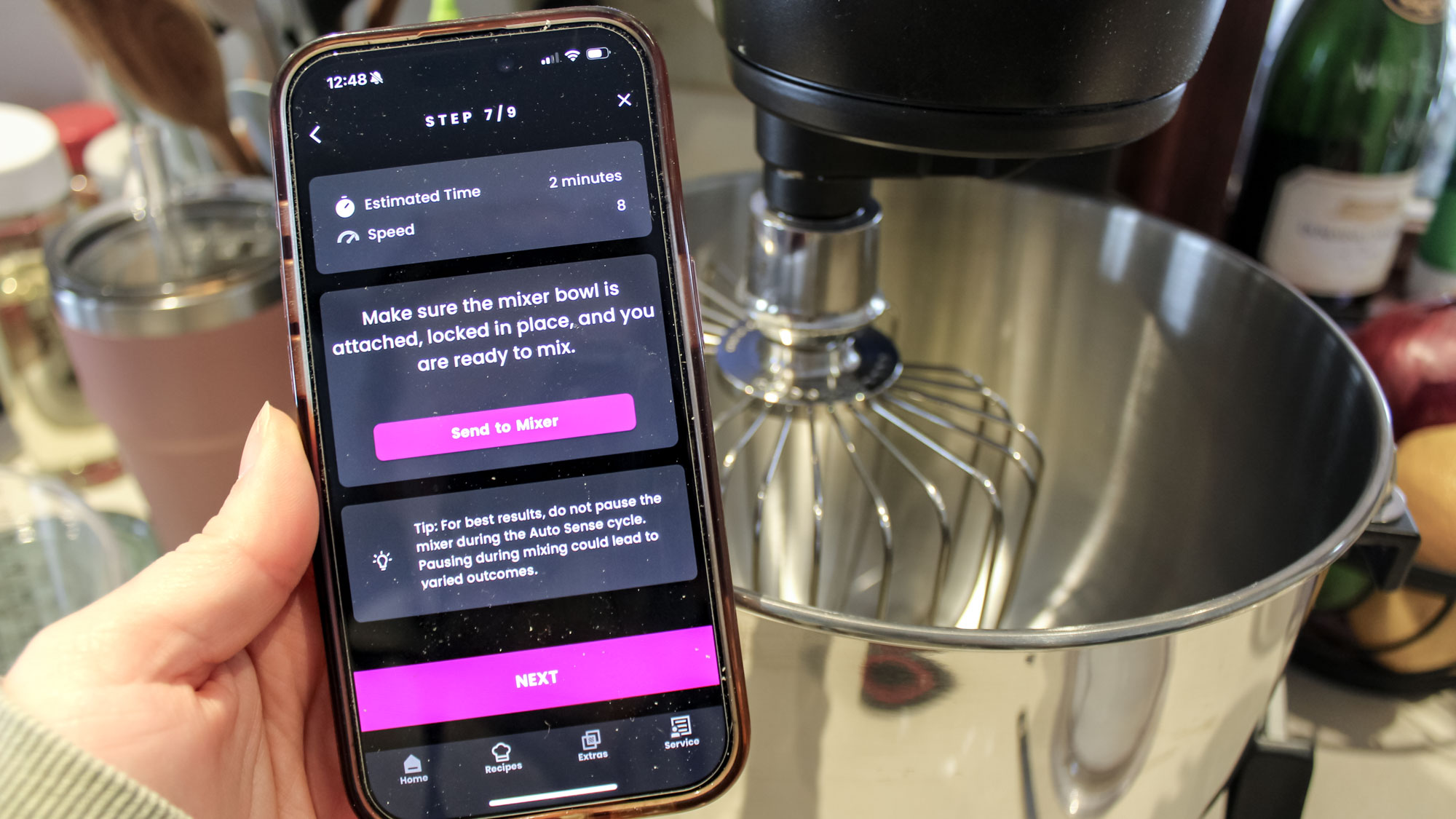
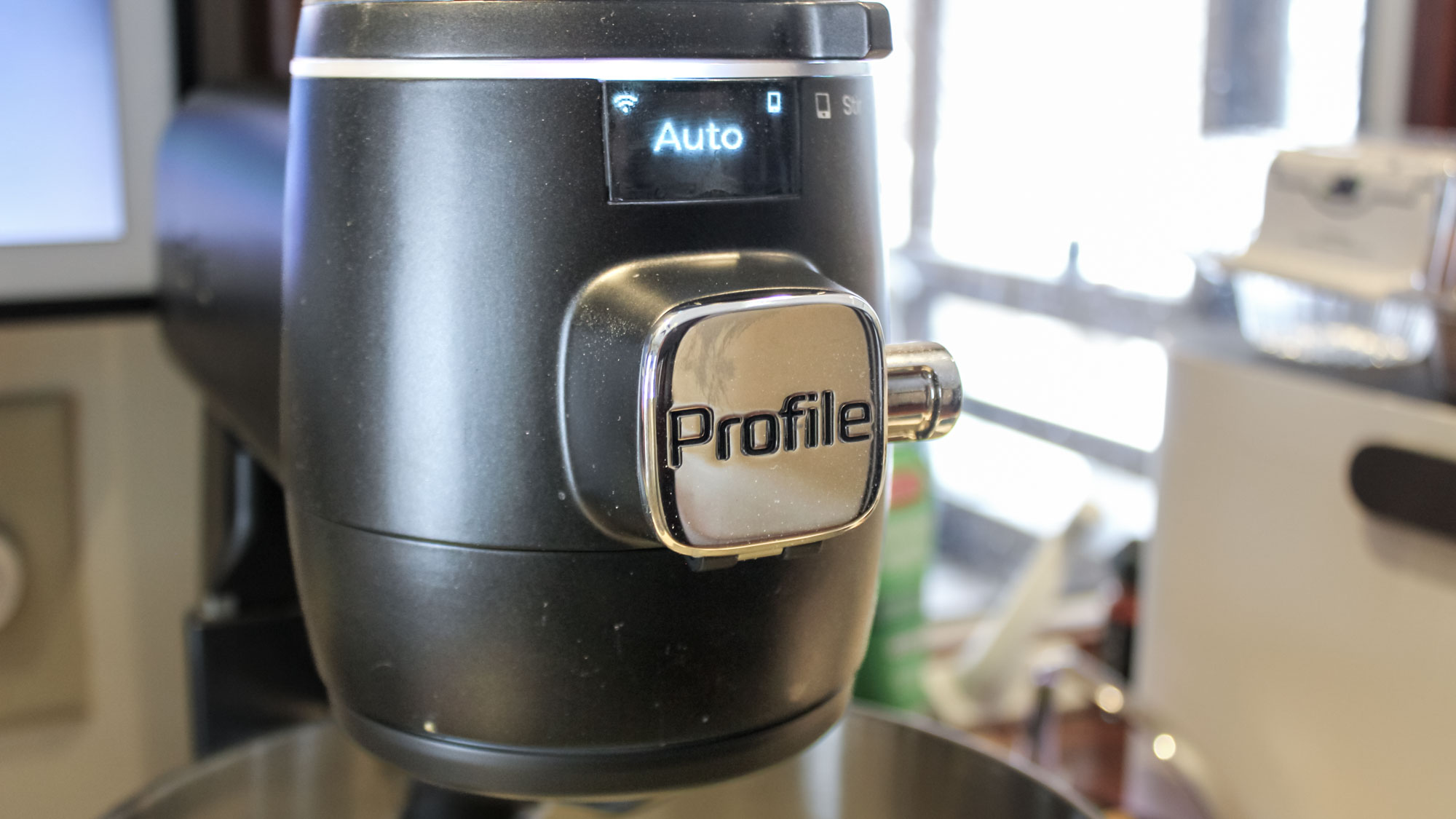
After I put the egg whites into the bowl, I followed the app’s instructions and hit start. It whipped the egg whites for around two minutes at speed 8, which isn’t nearly long enough to get stiff peaks. However, it proudly announced that it was finished, leaving me with slightly frothy whites. Safe to say, I was disappointed! Afterwards, I wondered if I should have opted for a meringue recipe in the app instead, but either way, I think the auto-sensing feature should have been able to tell that it was still fully liquid and not properly whipped.
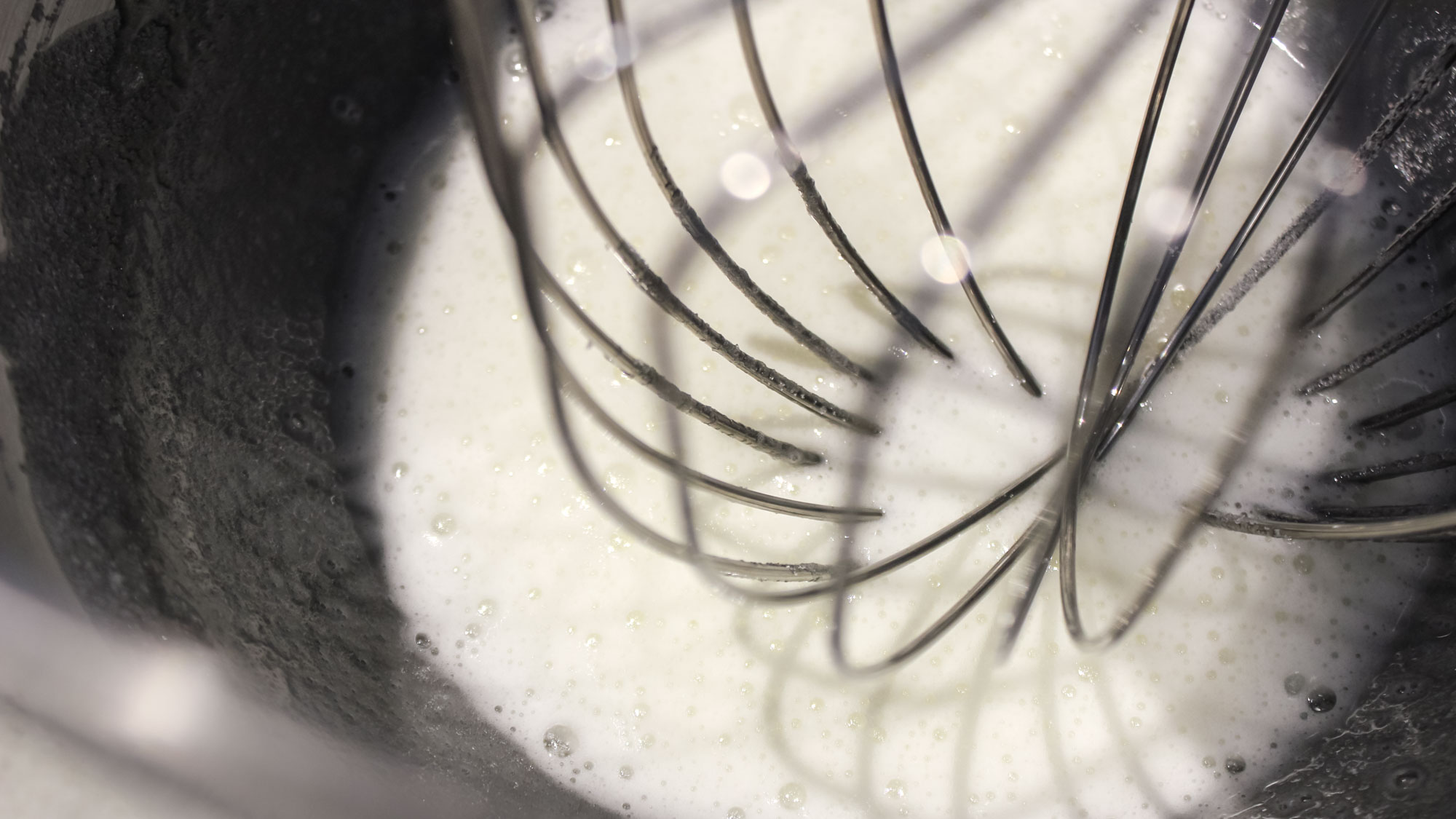
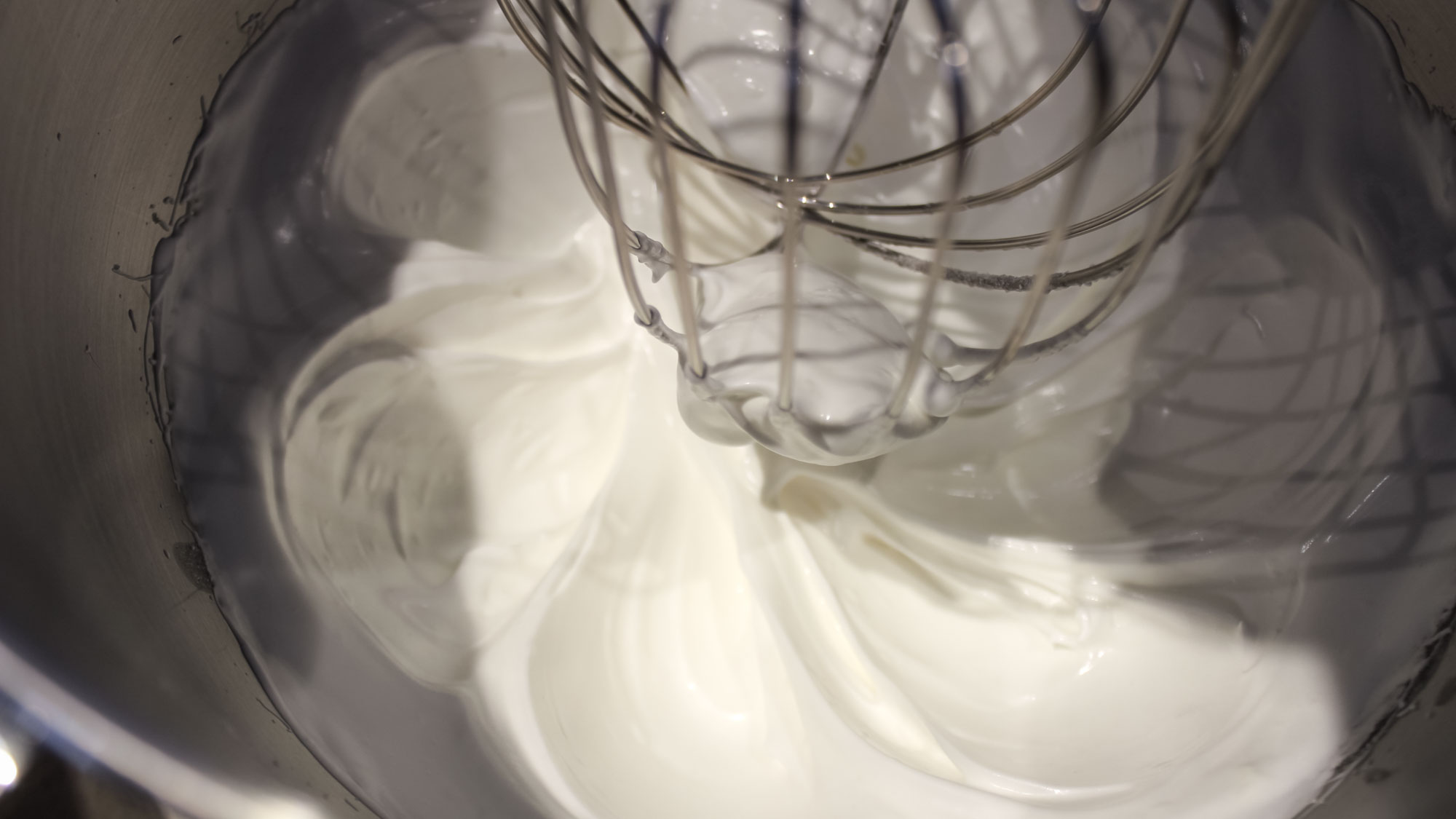
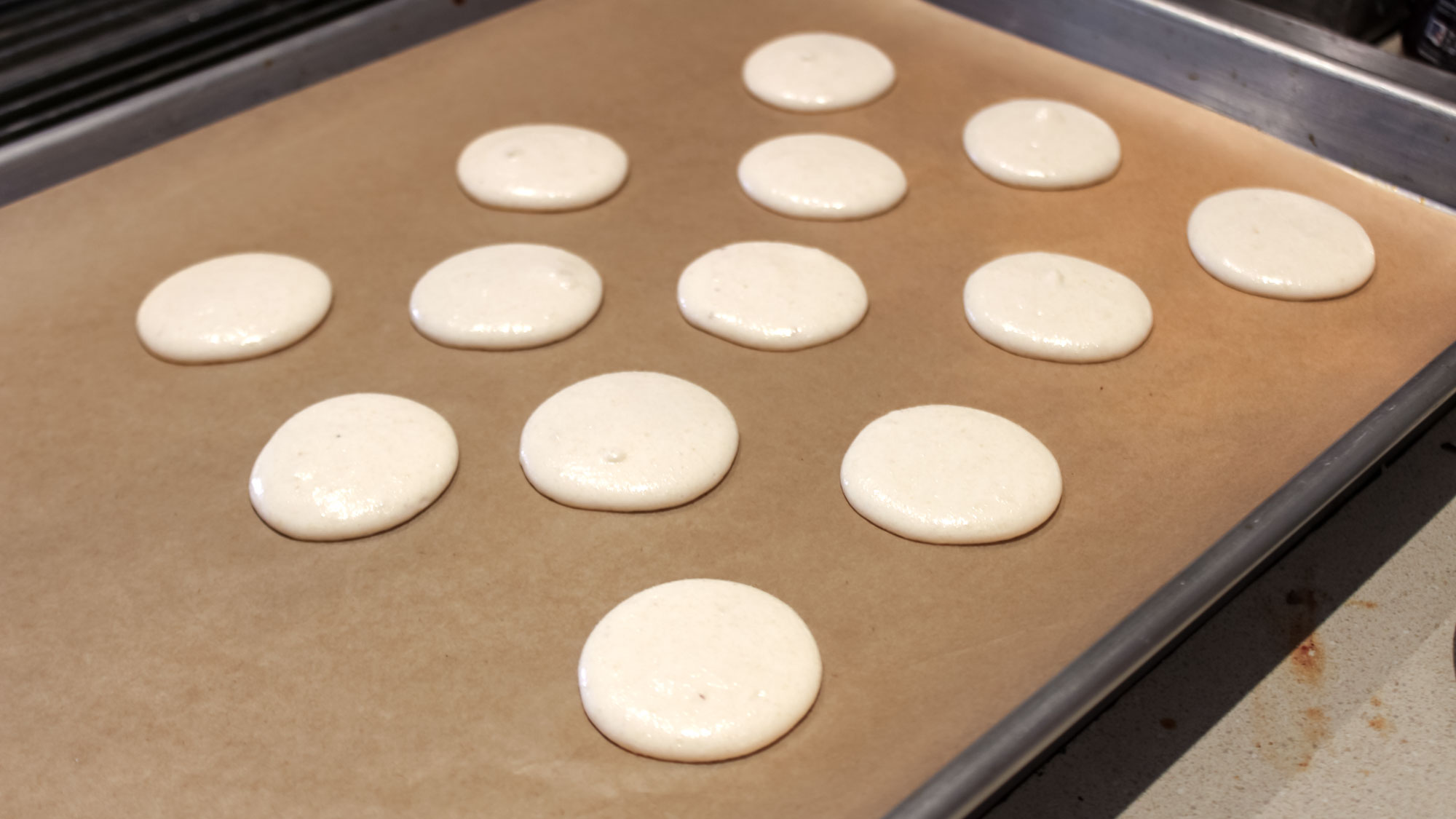
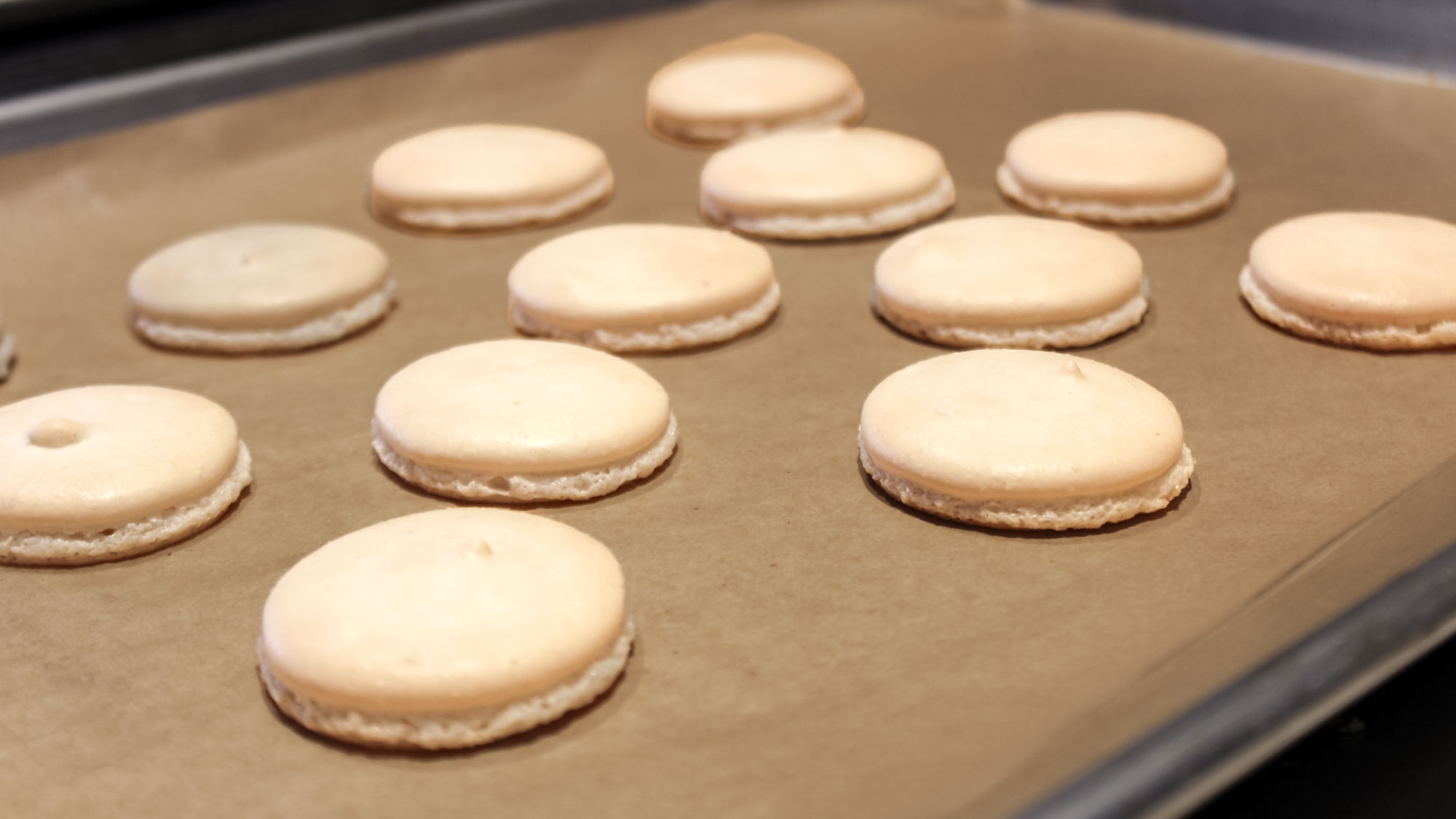
From there, I took matters into my own hands and went back to manually operating the mixer, and I was able to get my egg whites where they needed to be. It took around five more minutes of whipping on high speed, but they fluffed up nicely and made for perfectly risen macaron shells.
GE Profile Smart Mixer: Ease of Use
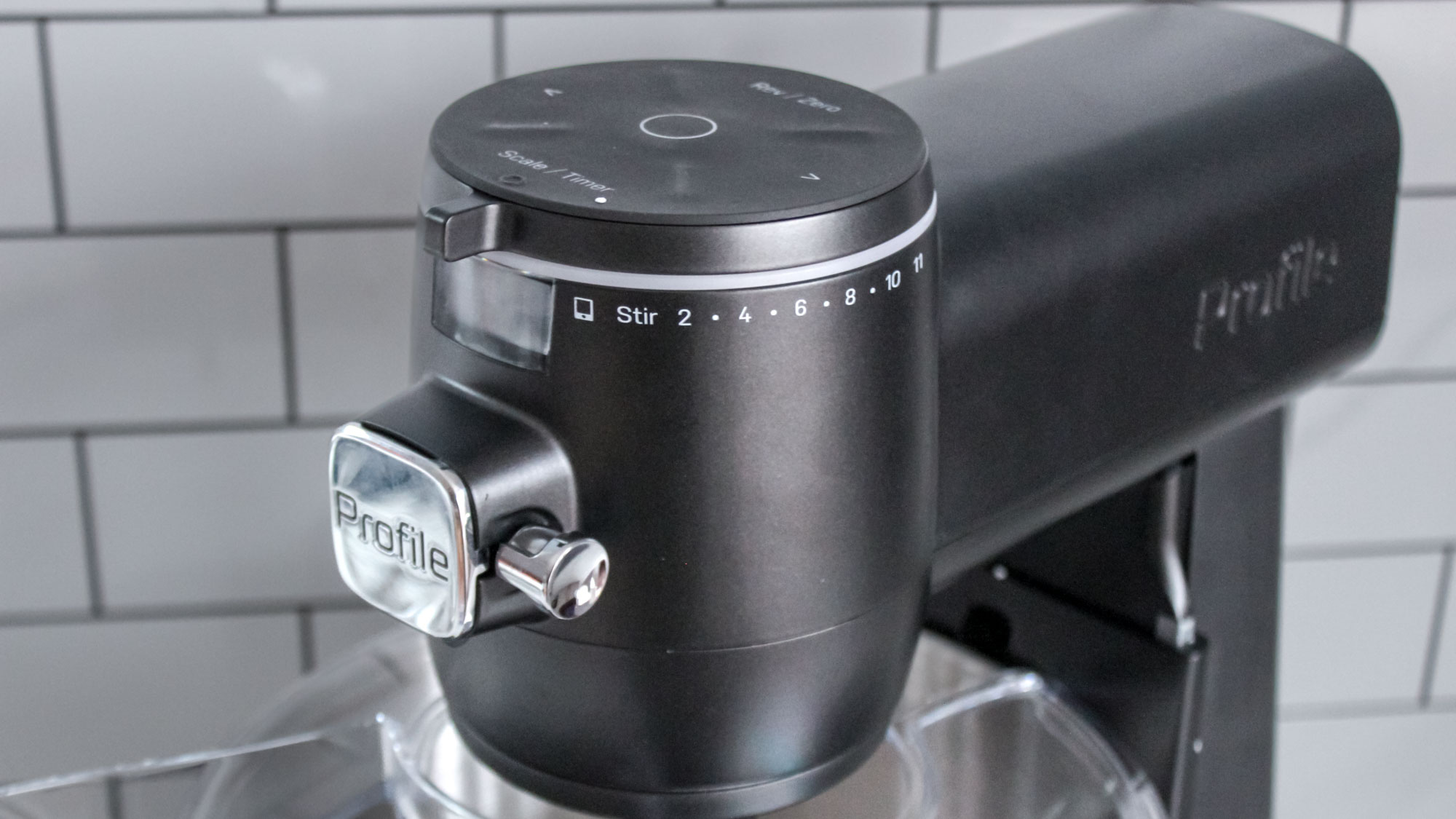
The GE Profile Smart Mixer is fairly easy to operate. You can adjust its speed between one and 11 using a lever on the side of its head, and there are buttons to switch between the timer and scale modes. I did find that the button toward the back of the head, which lets you zero out the scale, is sometimes finicky — you have to press in just the right spot to get it to register. Thanks to the quick-release design, the attachments are also easy to pop into place and remove.
However, after using the mixer for a few weeks, I have one complaint: You cannot remove the bowl from the mixer without first detaching the attachment. Even if you lower the bowl, there’s not enough clearance to take it out. This often got in the way of my workflow. Comparatively, my KitchenAid tilt-head mixer lifts the attachment up and out of the way, making it easy to remove and replace the bowl as needed.
On the other hand, this machine is quite easy to clean. The bowl and attachments can all be put into the dishwasher, and the machine’s exterior wipes clean easily. It also has fewer awkward nooks and crannies where crumbs can get stuck compared to my KitchenAid, which makes cleaning faster.
How does the GE Profile Smart Mixer compare?
I’ve owned a KitchenAid Artisan Series 5-Quart Tilt Head Stand Mixer ($349 at Amazon) for more than 10 years now, and I much prefer it over the GE Profile Smart Mixer. My KitchenAid does a much better job scraping the sides of the bowl as it stirs, and I find its tilt-head to be more convenient when I need to add ingredients or scrape down the work bowl. It’s also more easy to move around compared to the GE, and while still an investment, it’s much cheaper than the GE.
If you specifically want a large, drop-bowl mixer, KitchenAid does have its 7-Quart Bowl-Lift Stand Mixer ($529 at Amazon), which is even more comparable to the GE. And while it doesn’t have as many high-tech features, it’s a powerful and reliable appliance that’s beloved by many home bakers.
Should you buy the GE Profile Smart Mixer?
There were several factors that I loved about the GE Profile Smart Mixer. Overall, it’s pretty easy to use and incredibly powerful and stable, even when working at high speeds. Its attachments are heavy-duty and all dishwasher-safe, and I absolutely loved its built-in timer, which automatically shuts the unit off when it’s done mixing.
That said, I’m not completely sold on this appliance. Its smart features are gimmicky and didn’t work particularly well in testing, and its 44-pound weight is way too heavy for most people to move around. Overall, the design doesn’t justify its extra-high price point — most people will be better off with a regular KitchenAid, which will save you a few hundred dollars.

Camryn Rabideau is a freelance writer and product reviewer specializing in home, kitchen, and pet products. In her five years as a product tester, she's tested hundreds of items first hand, and her work appears in publications such as Forbes, USA Today, The Spruce, Food52, and more.
You must confirm your public display name before commenting
Please logout and then login again, you will then be prompted to enter your display name.
